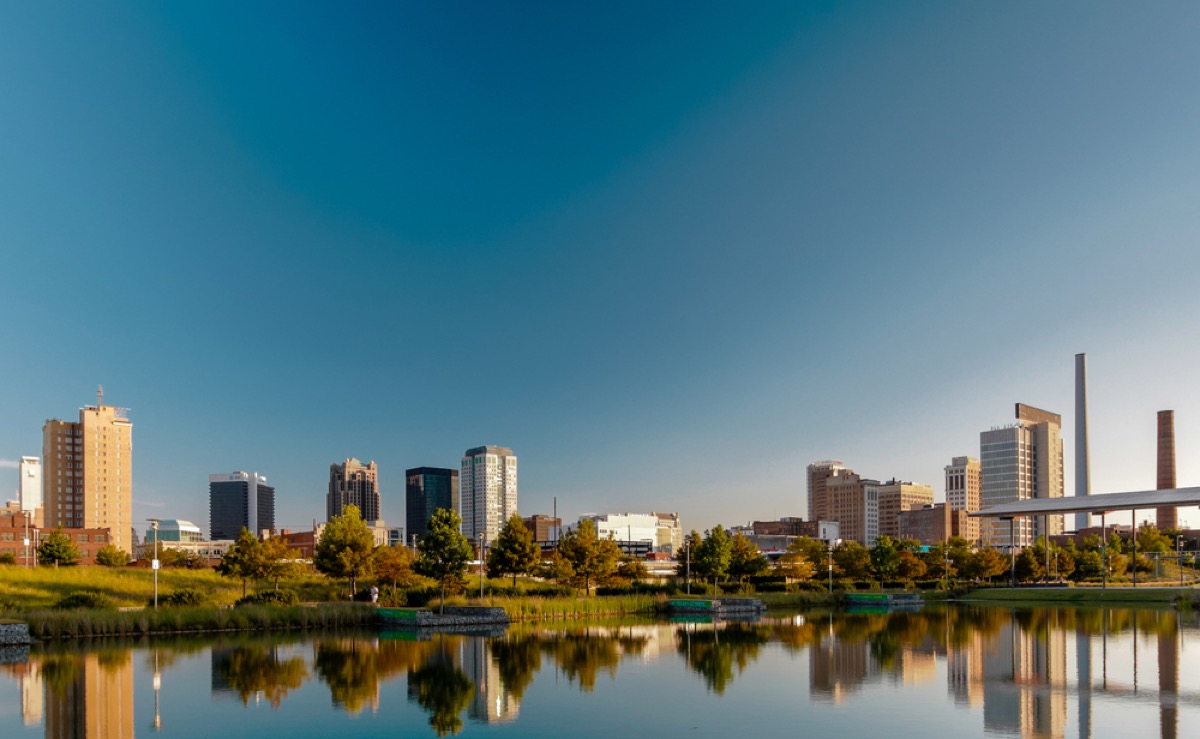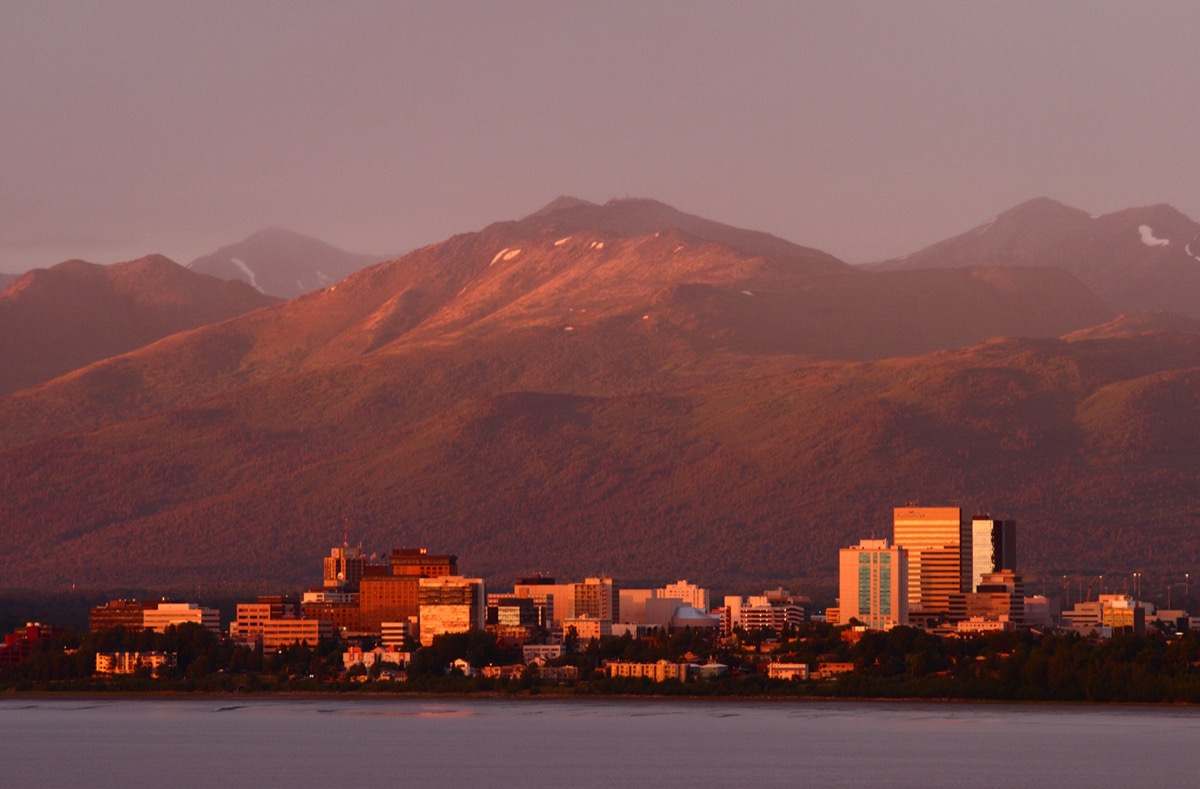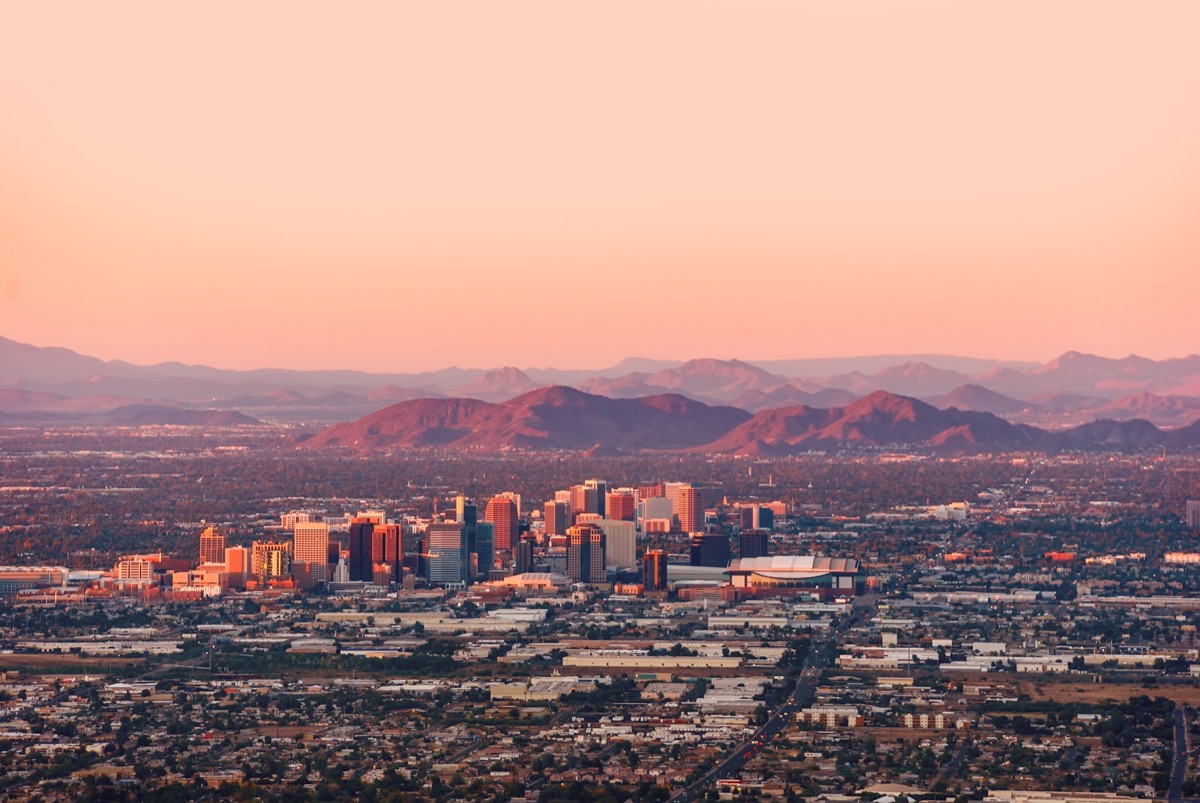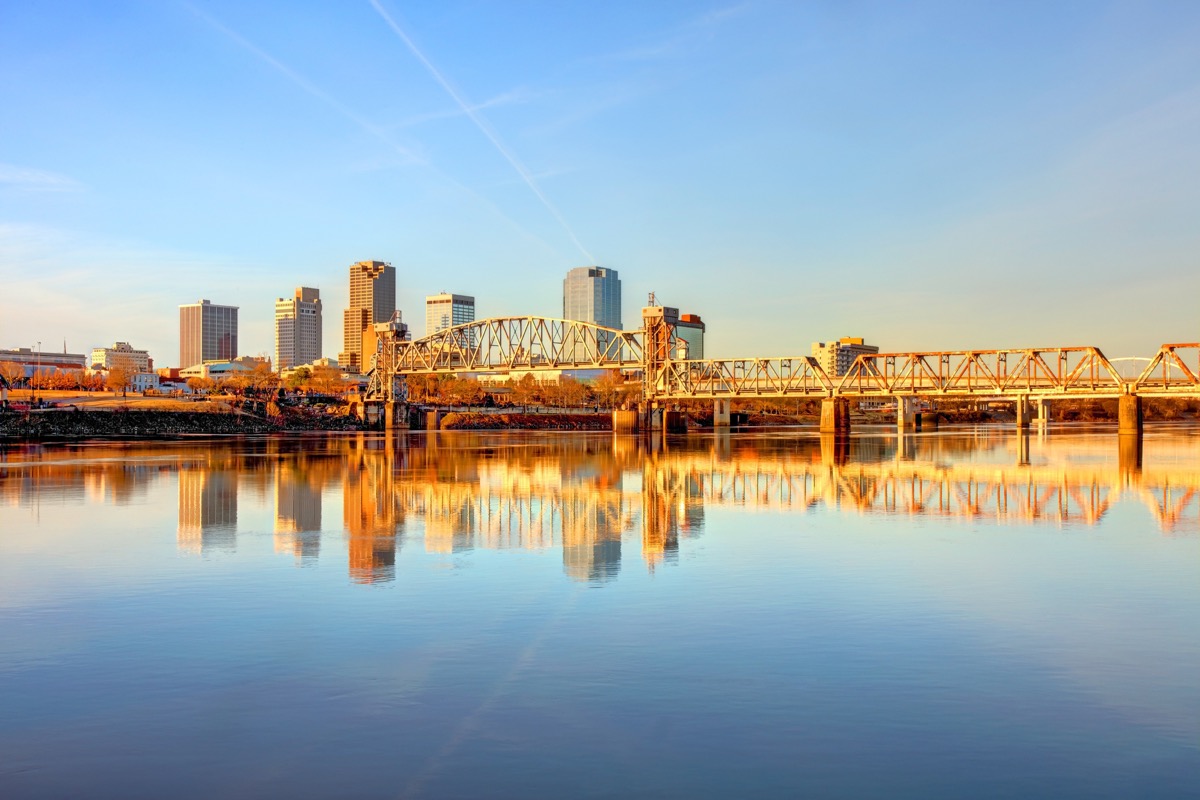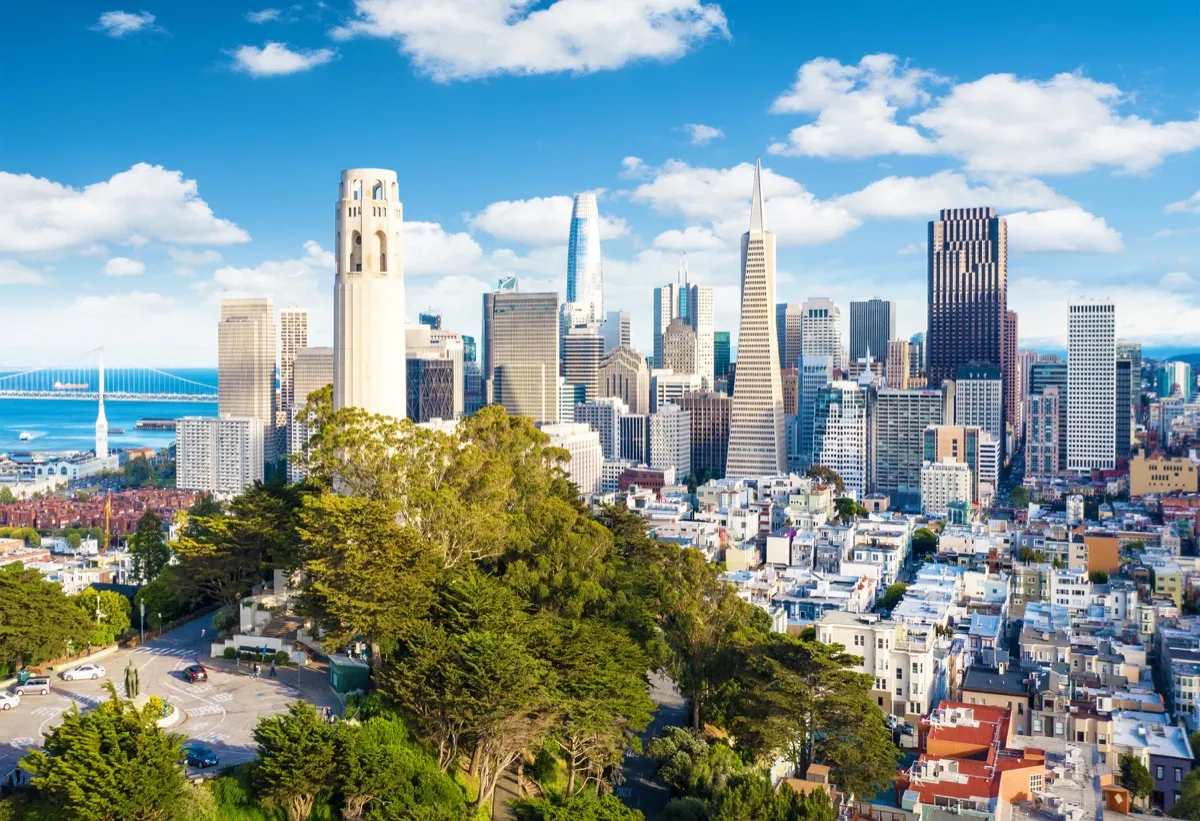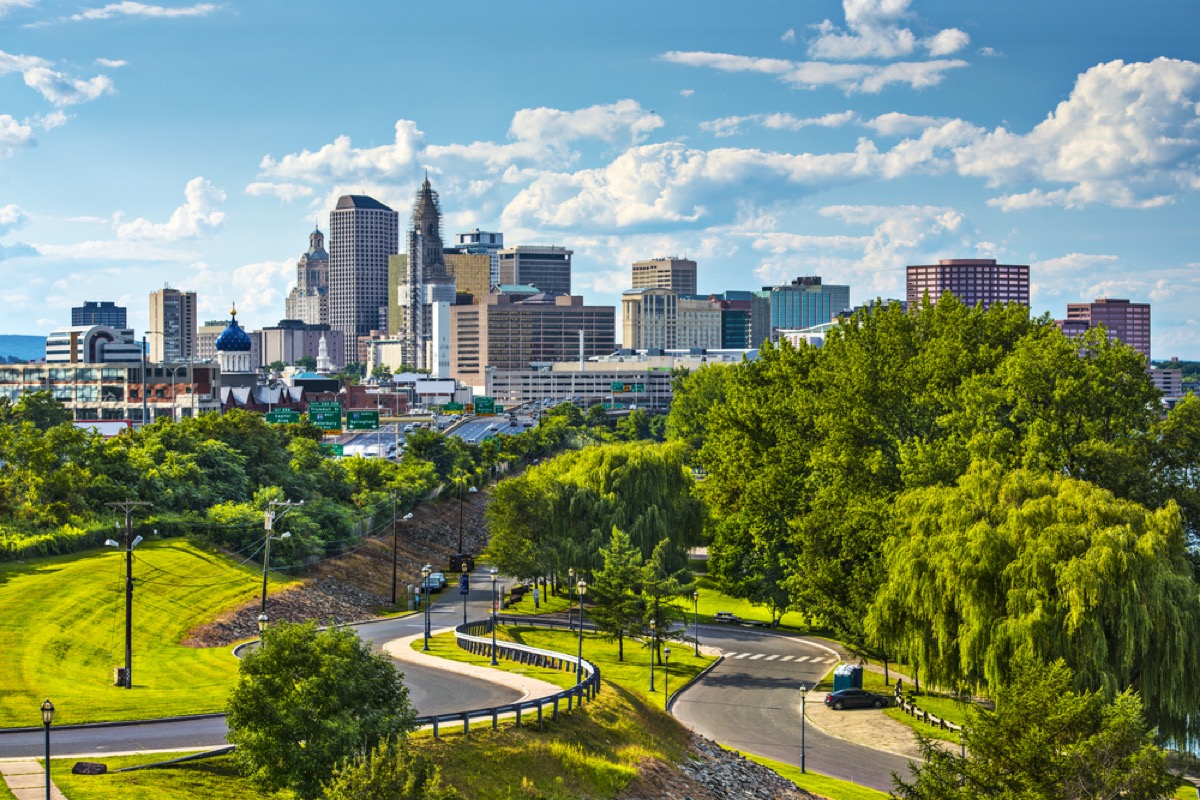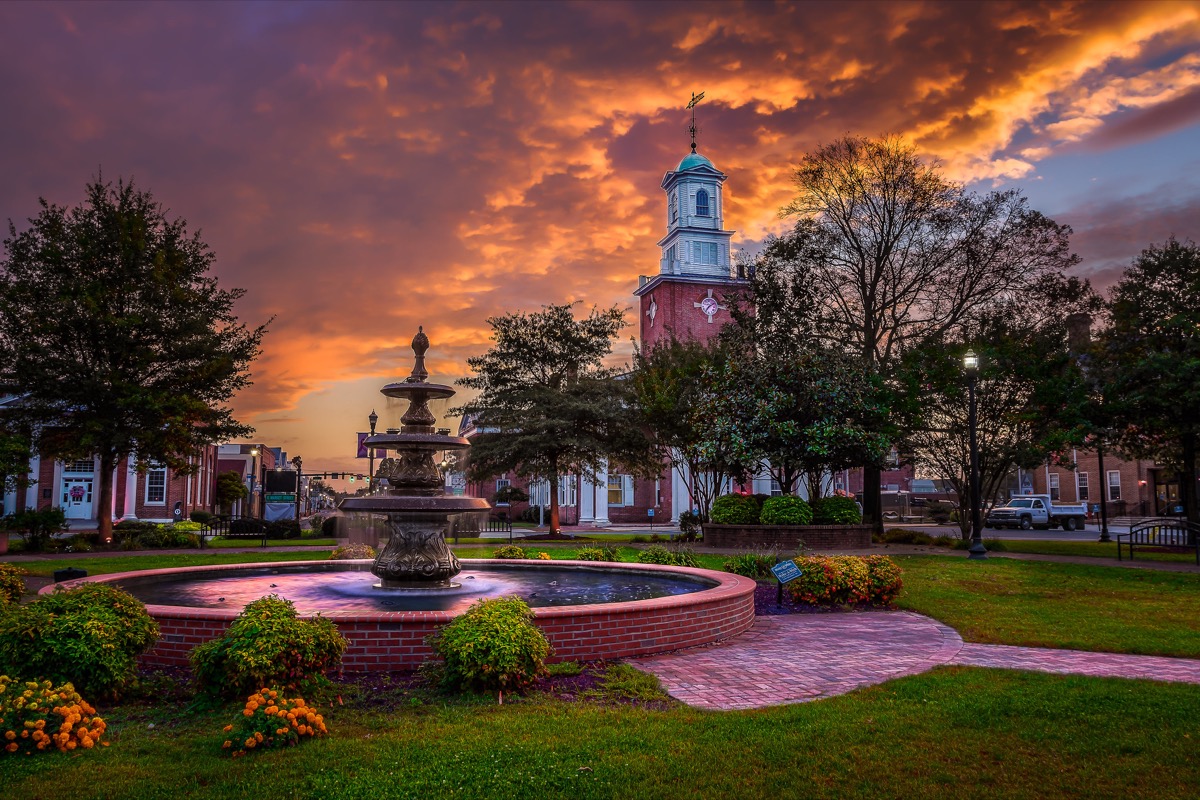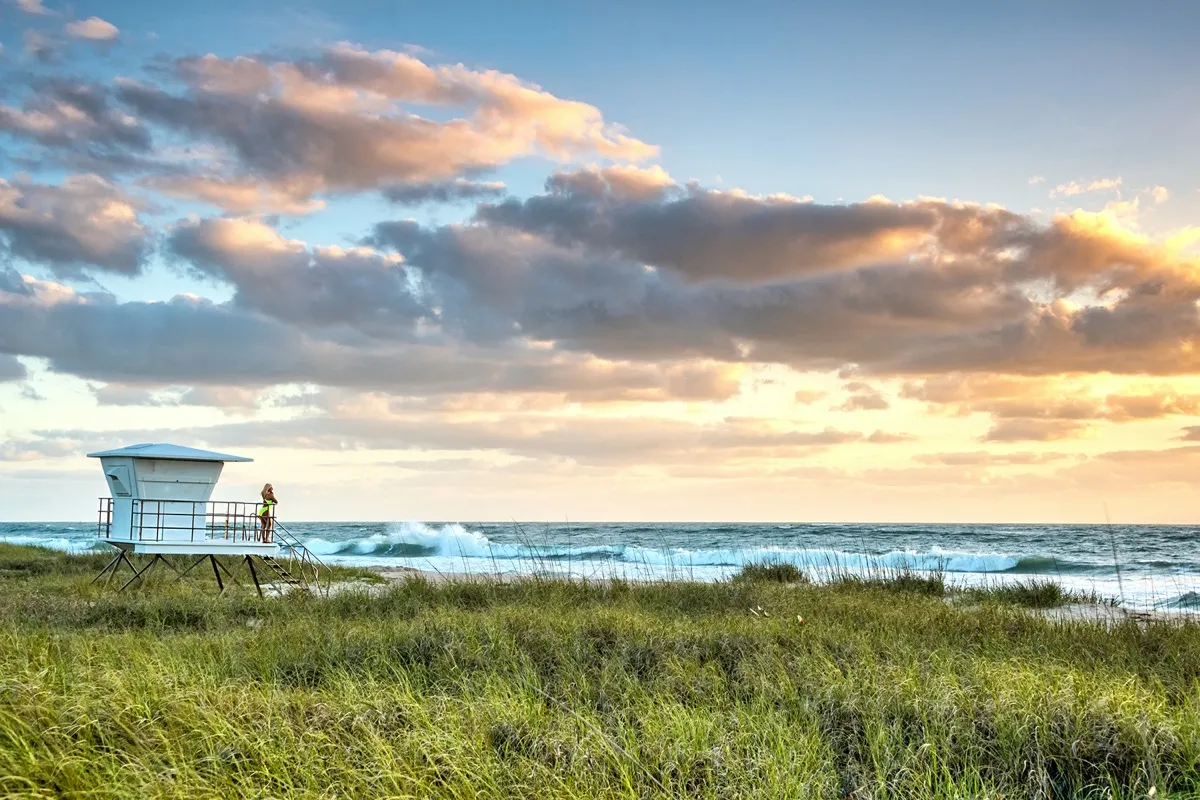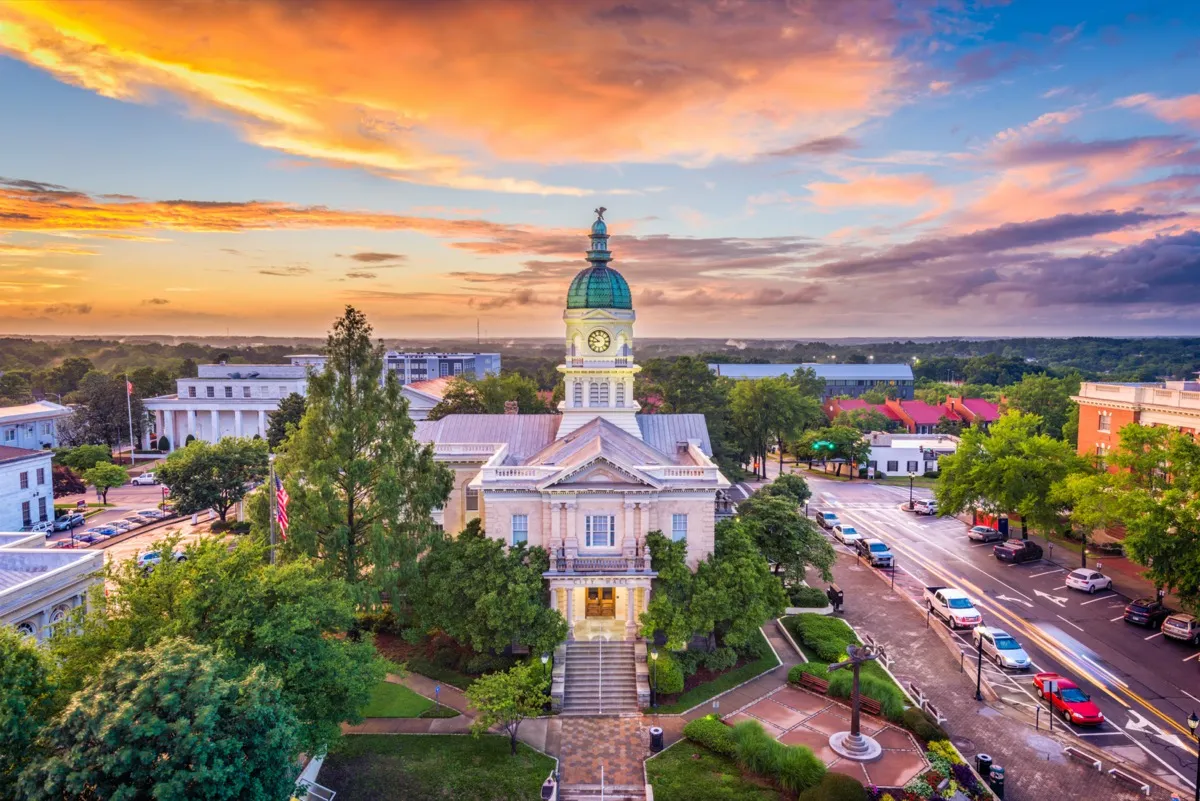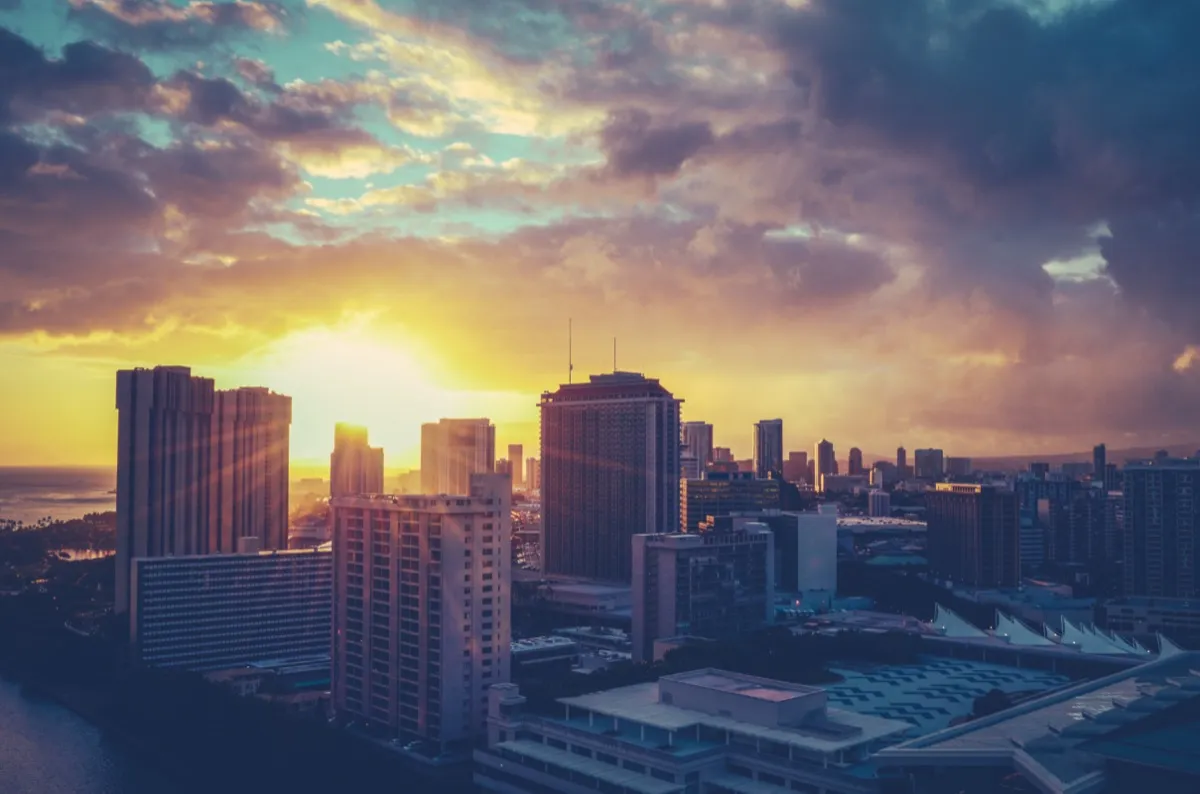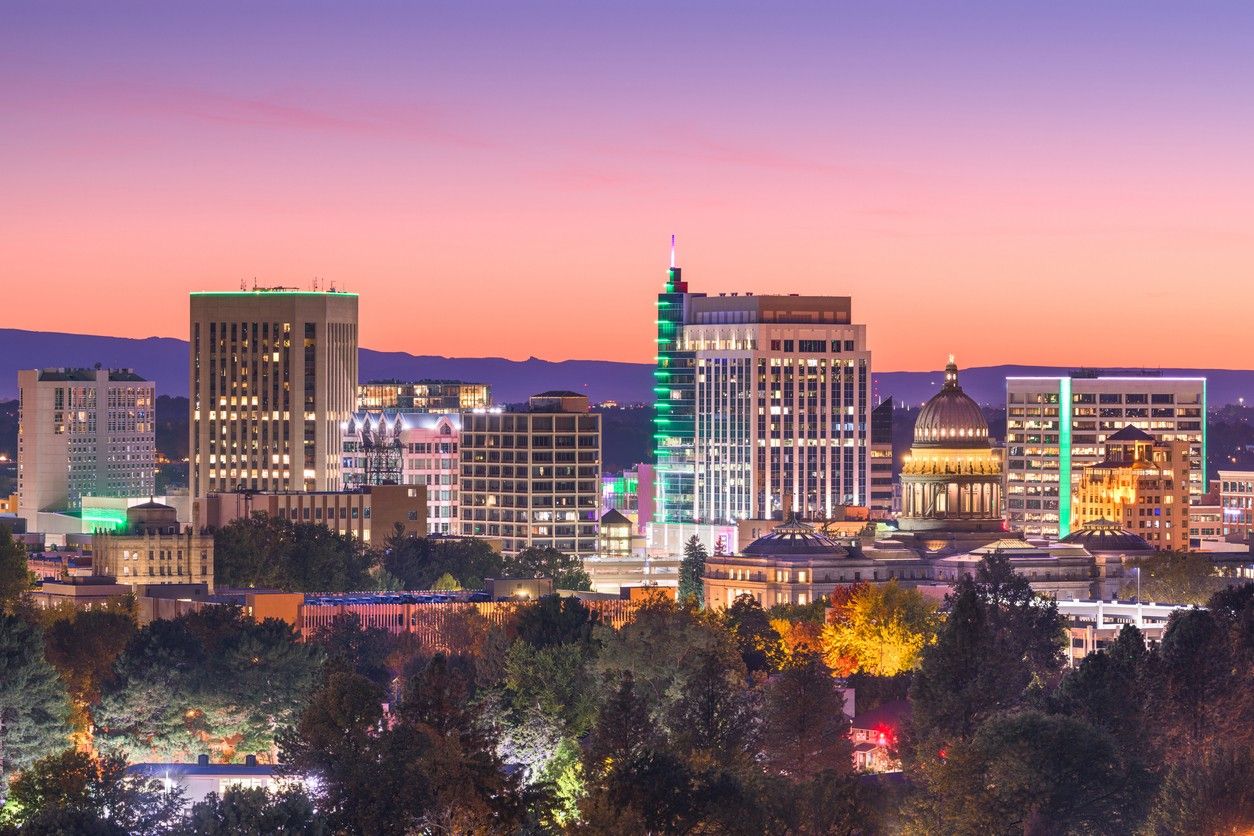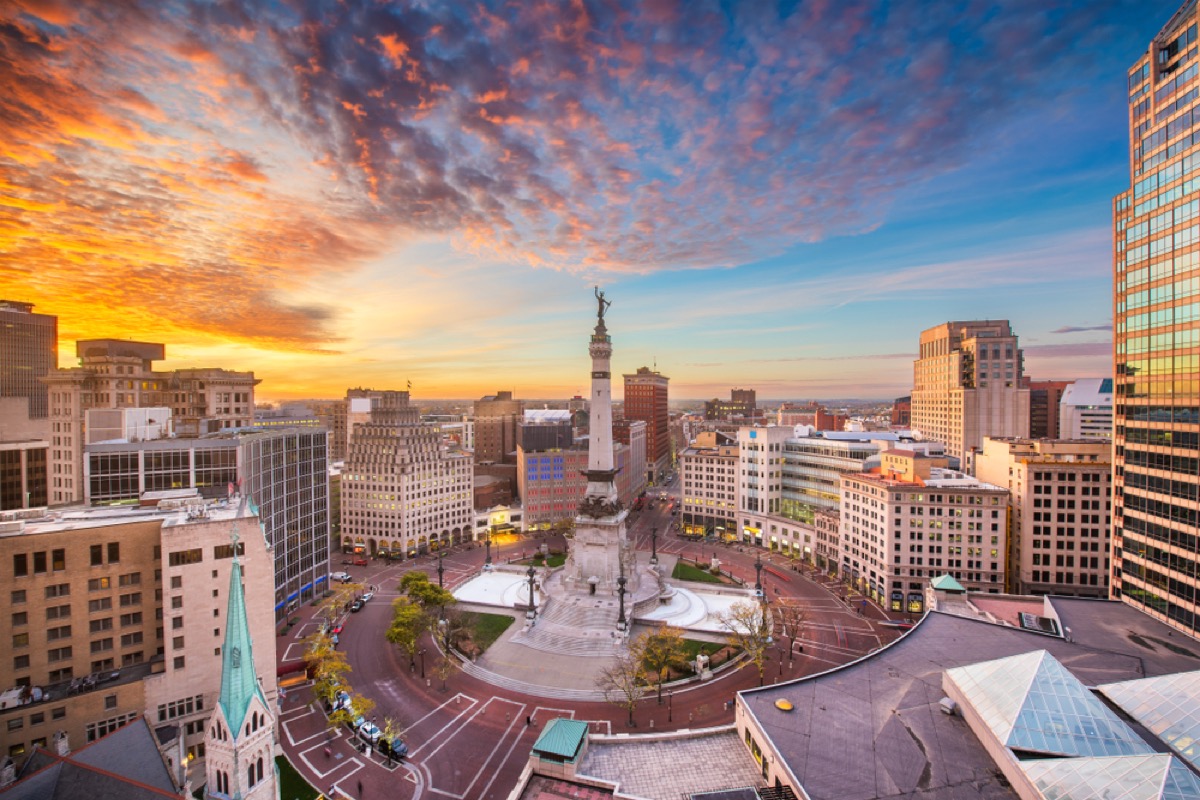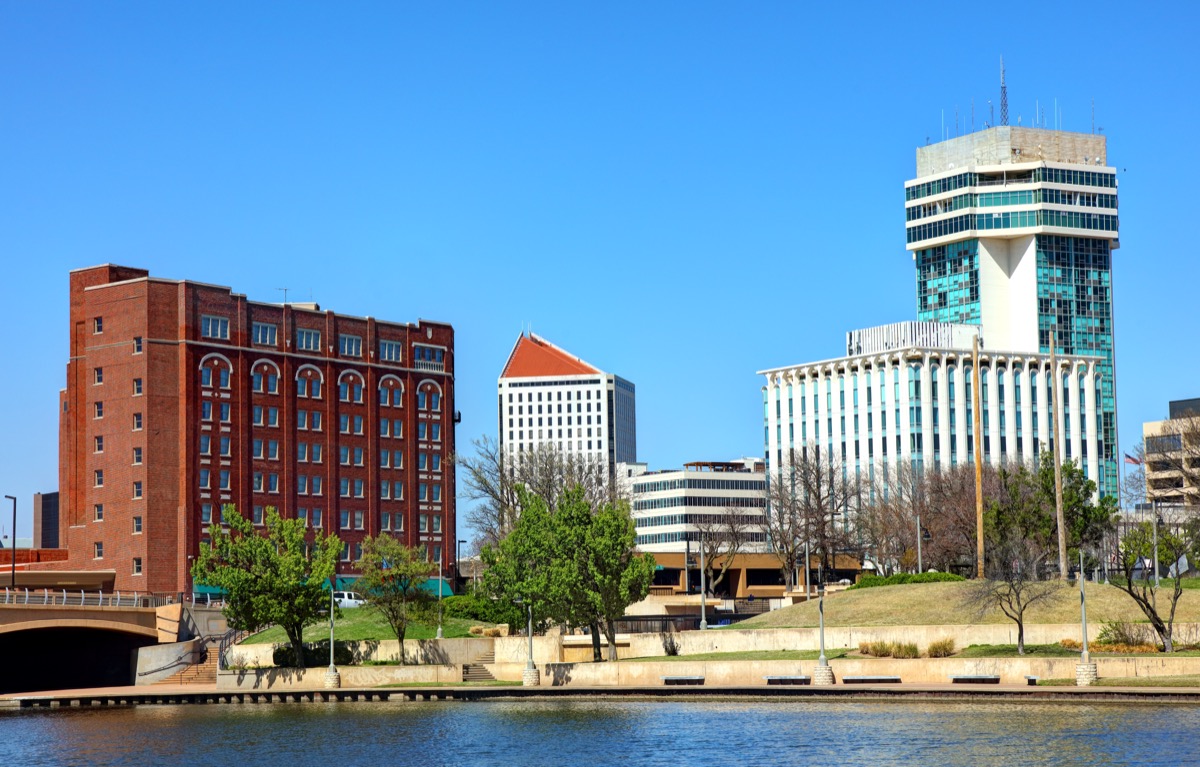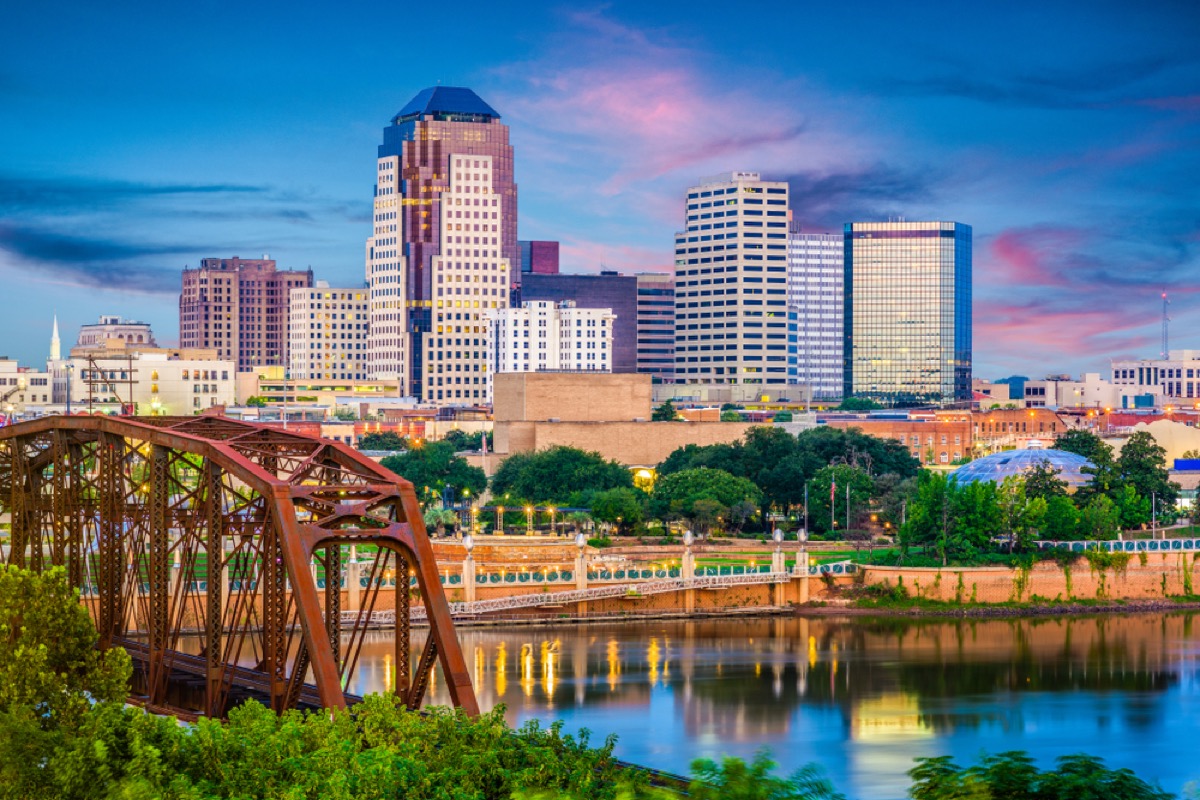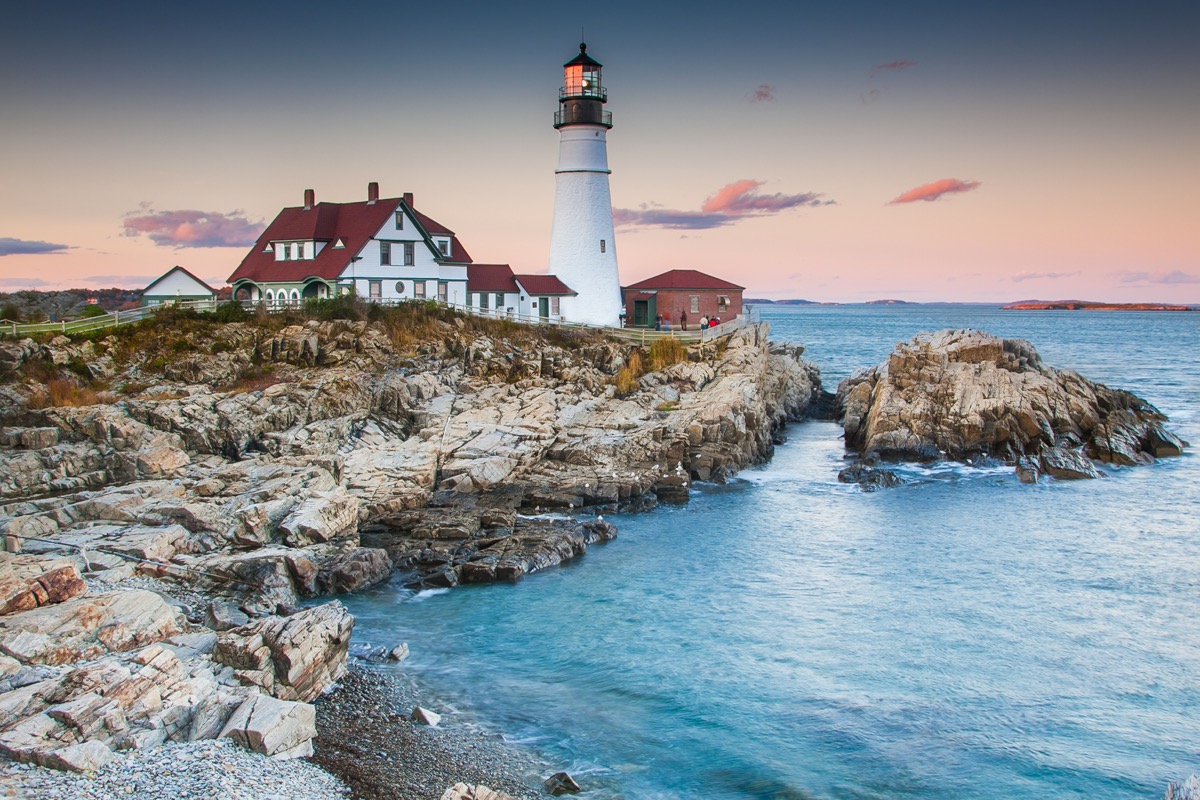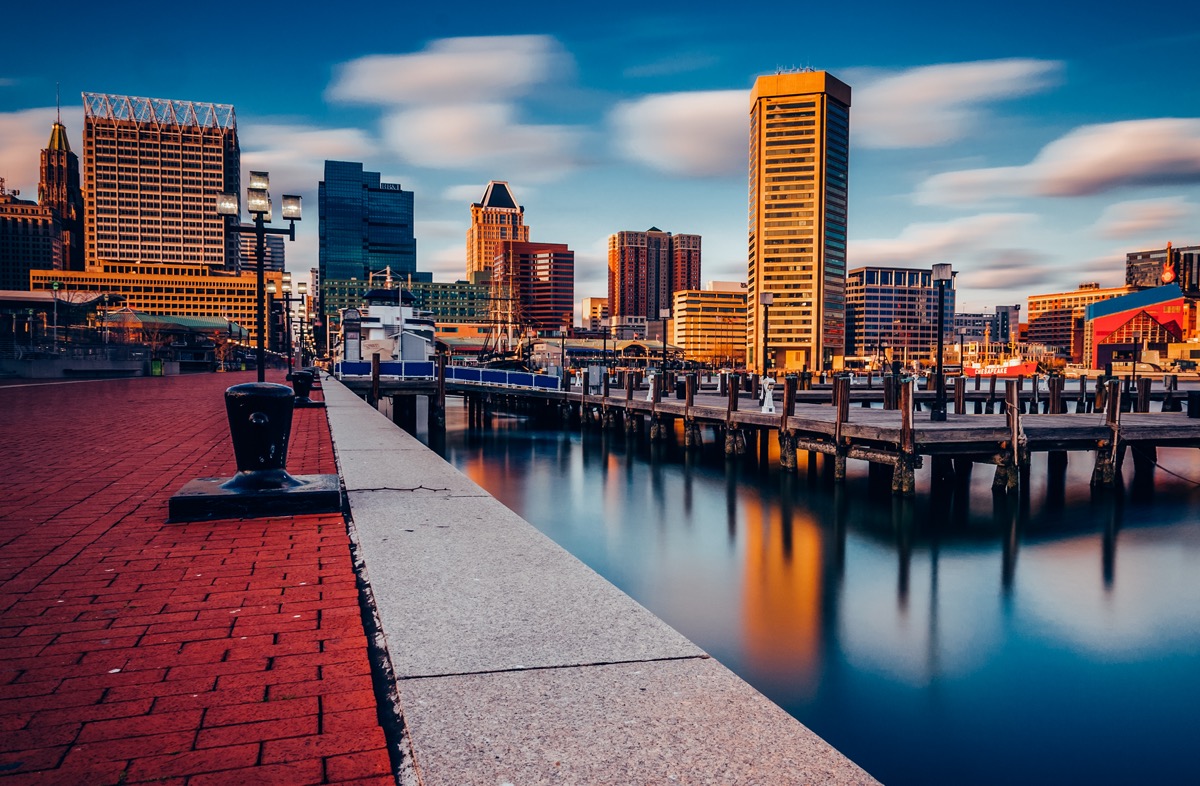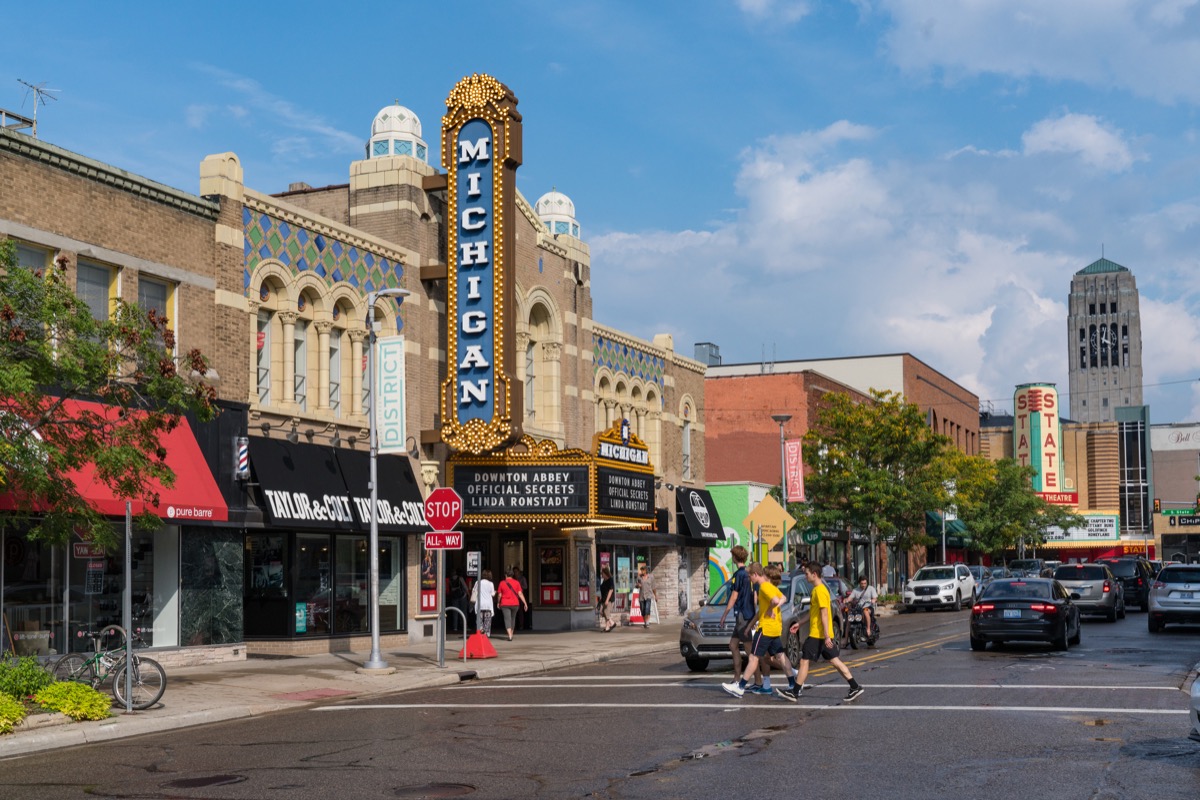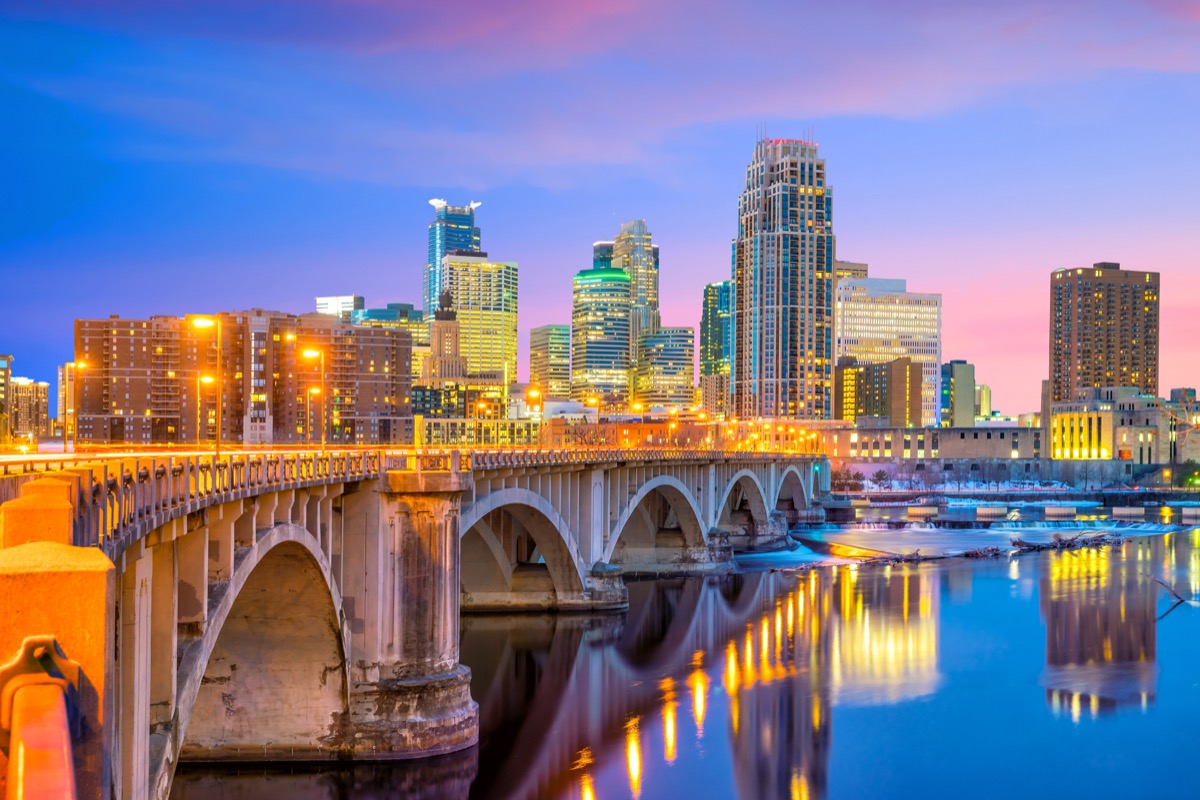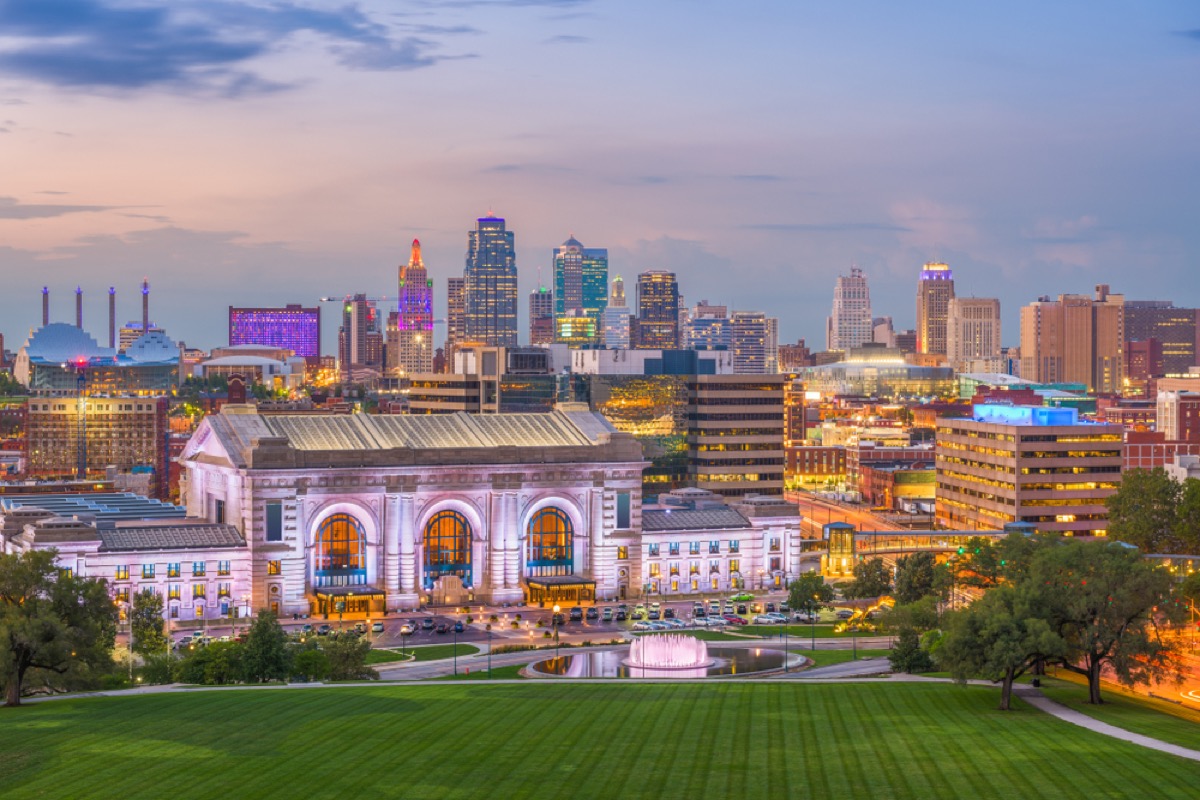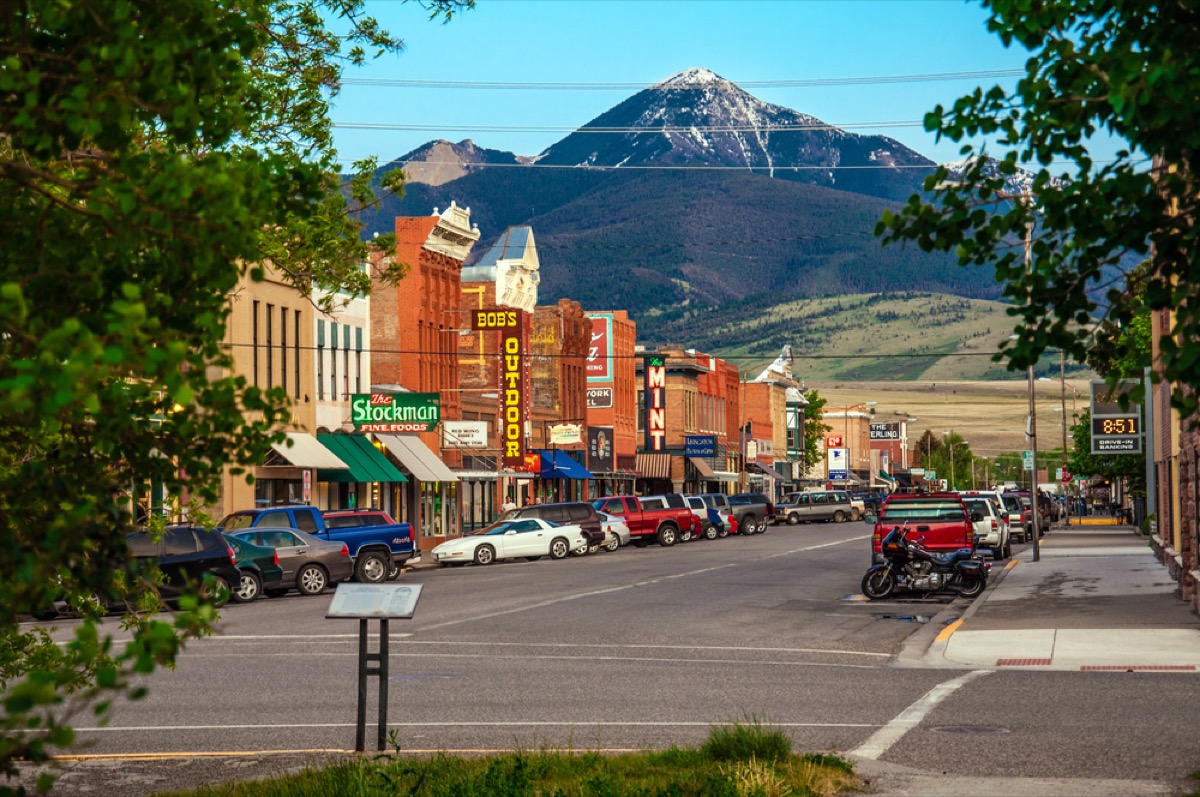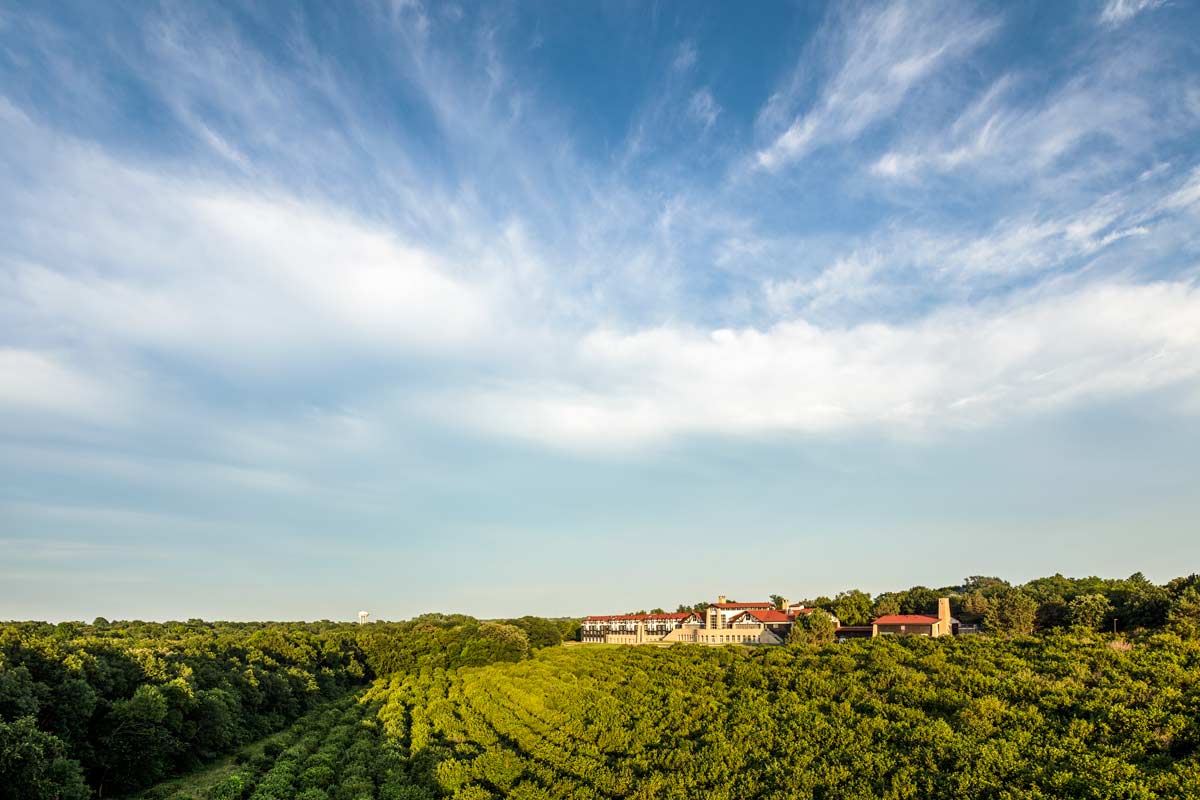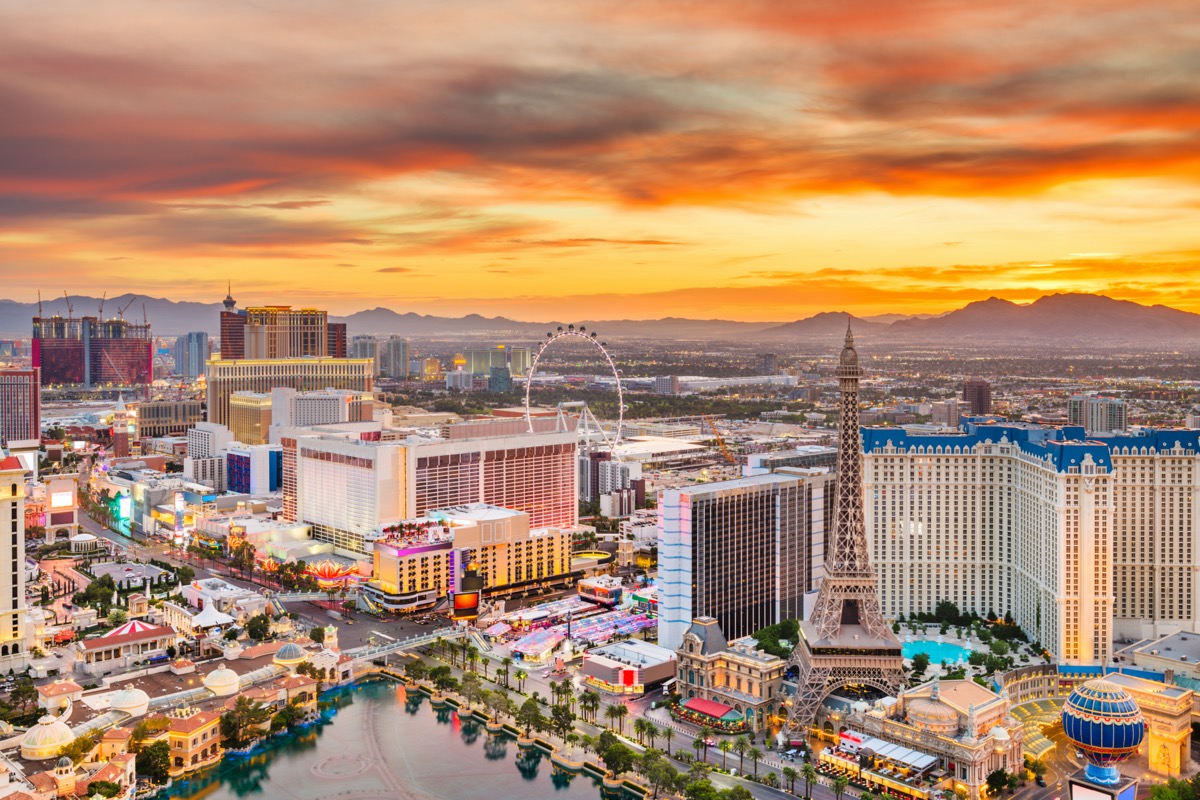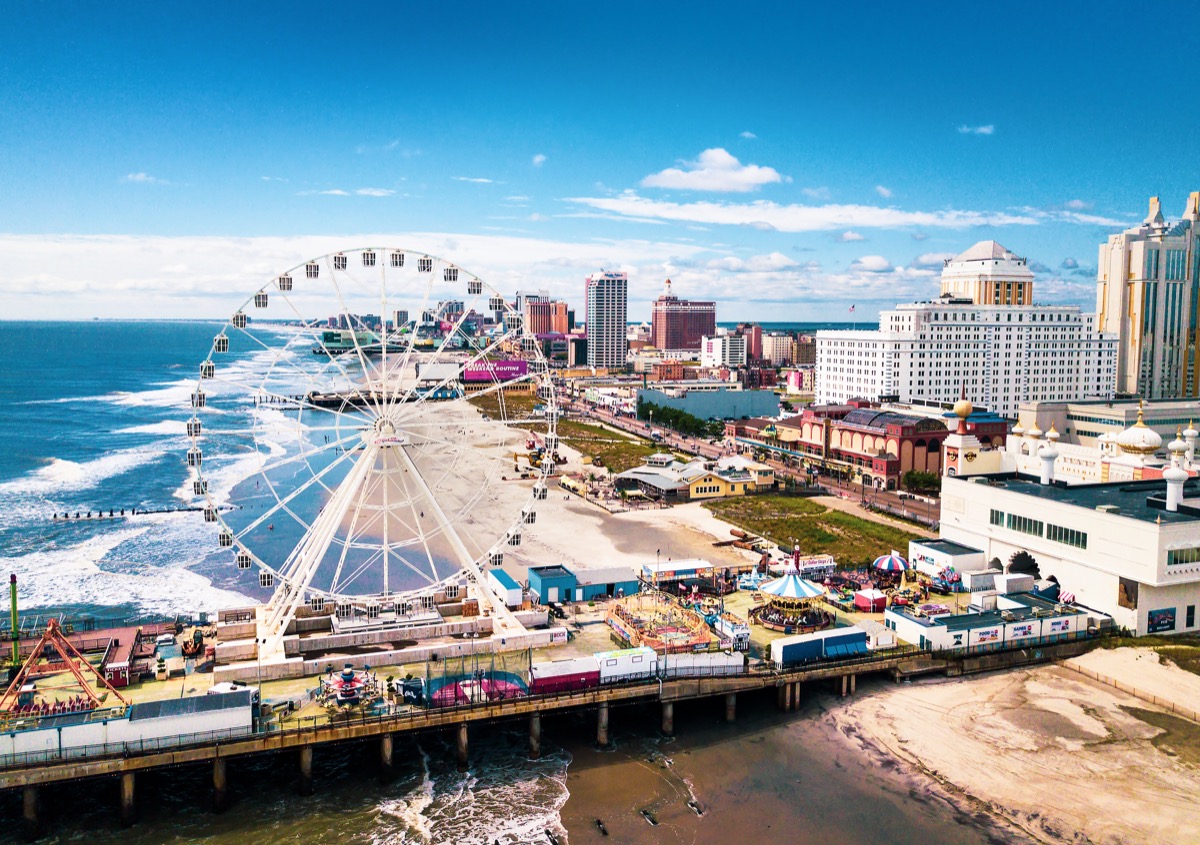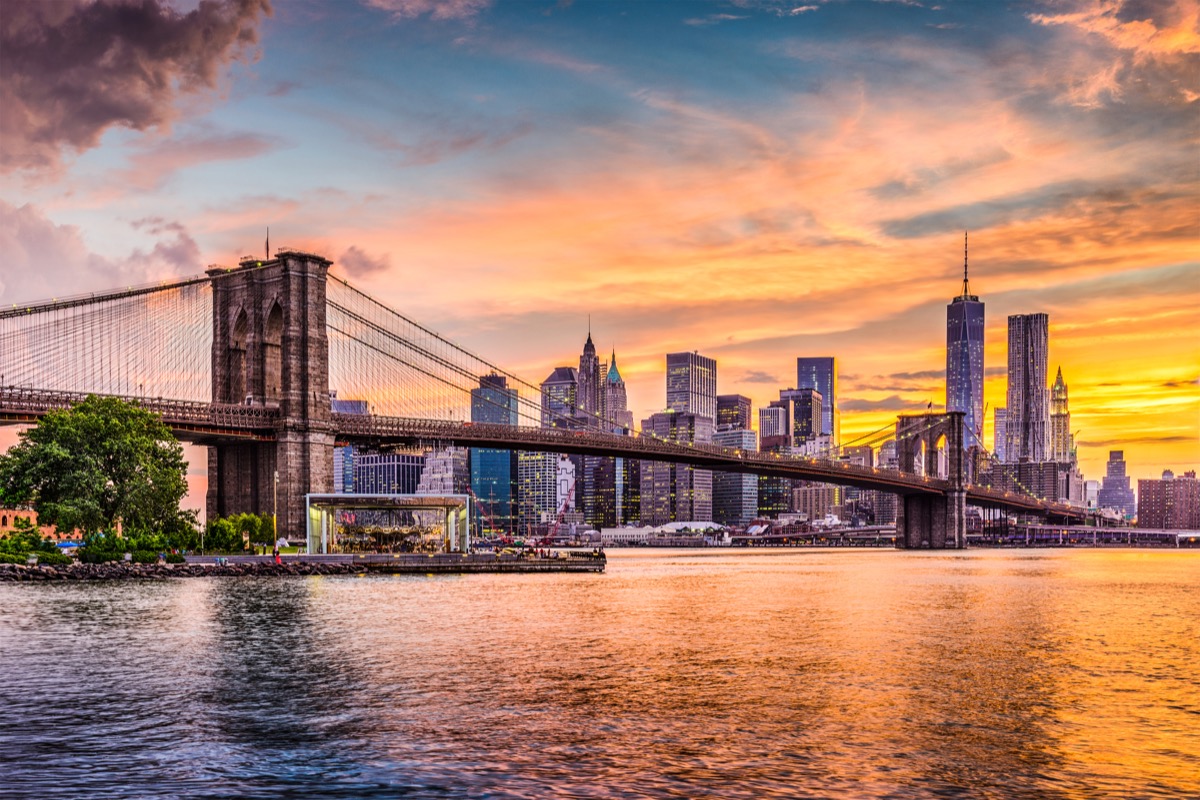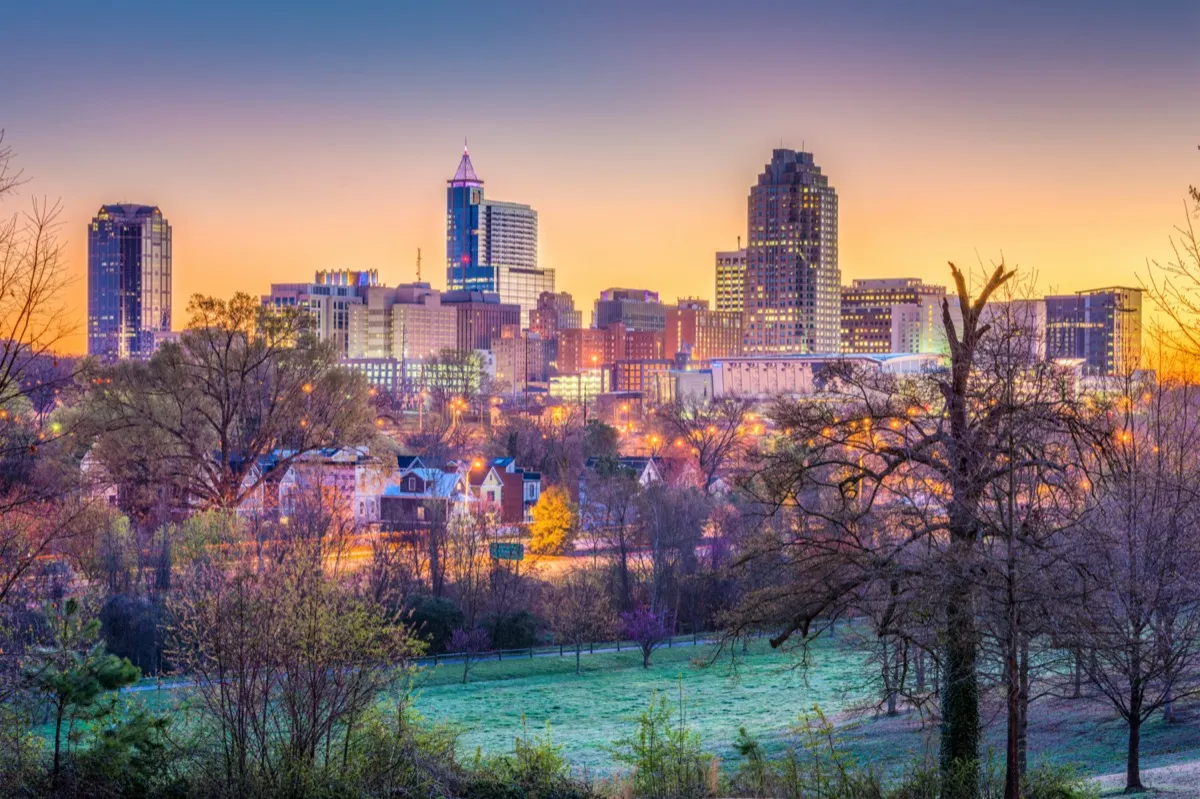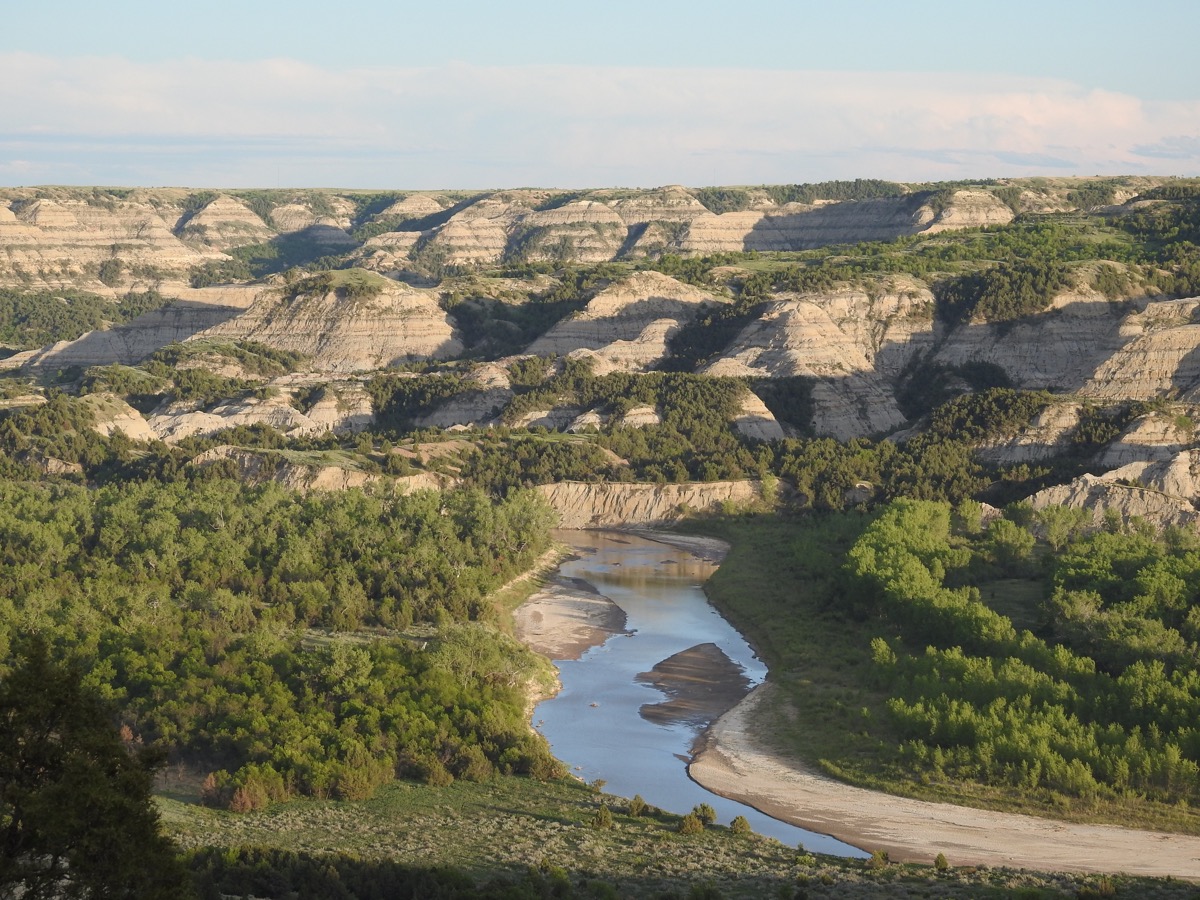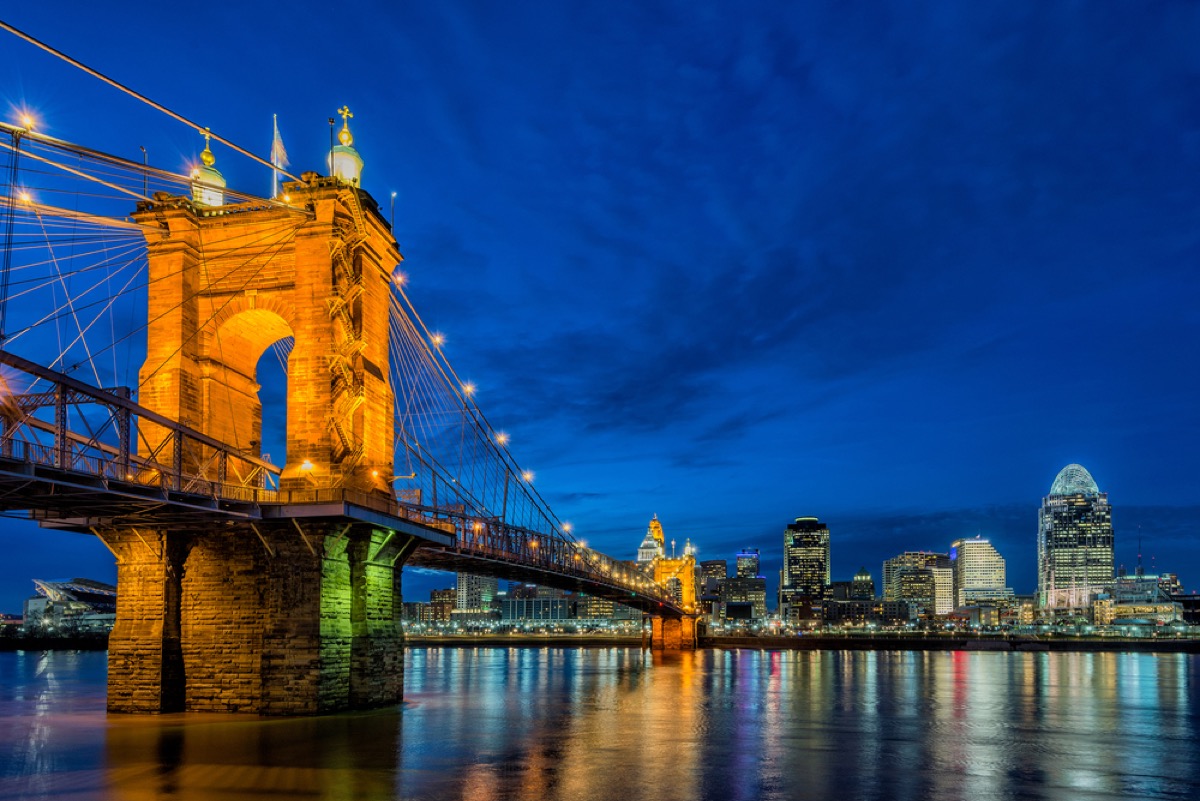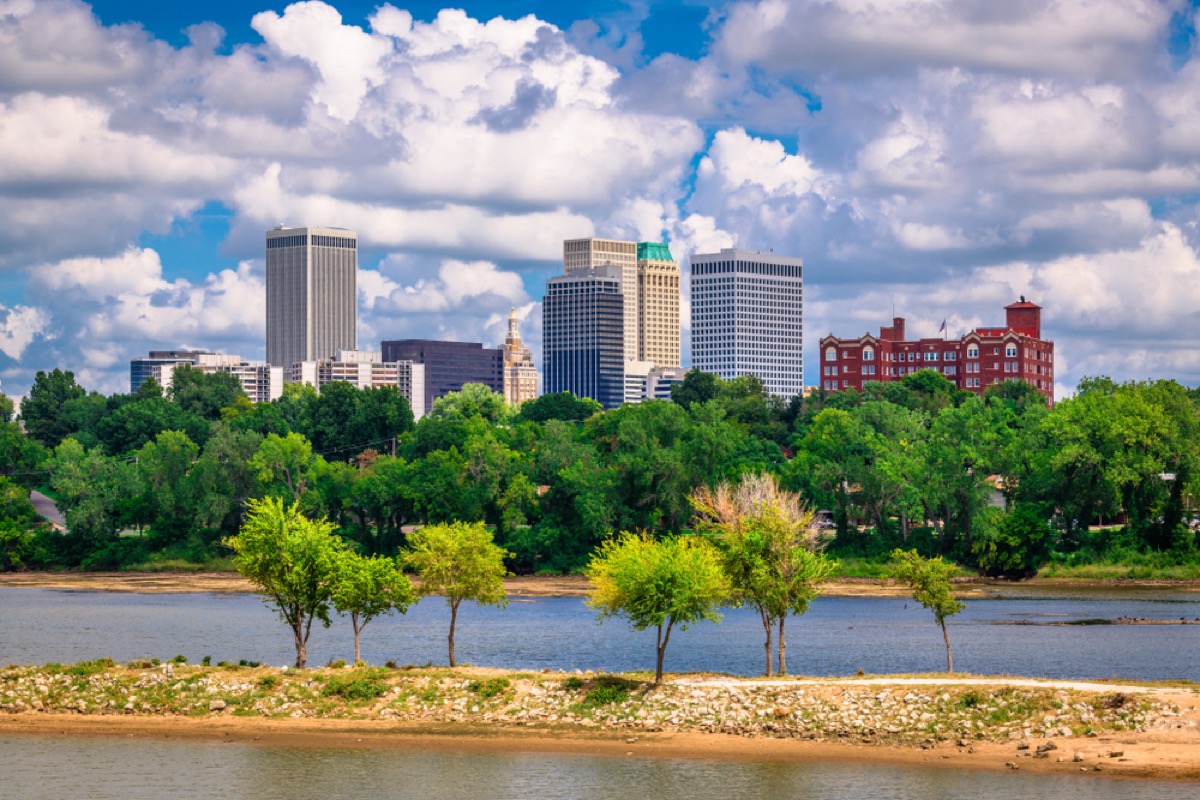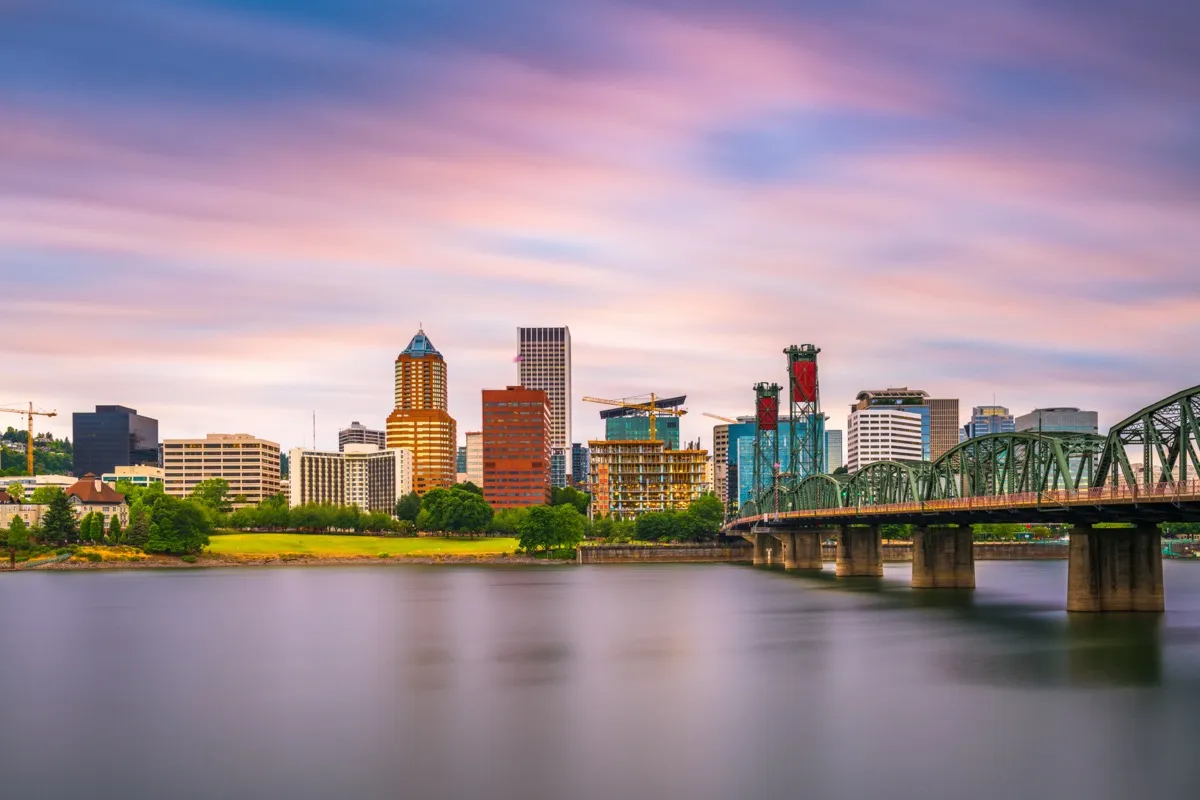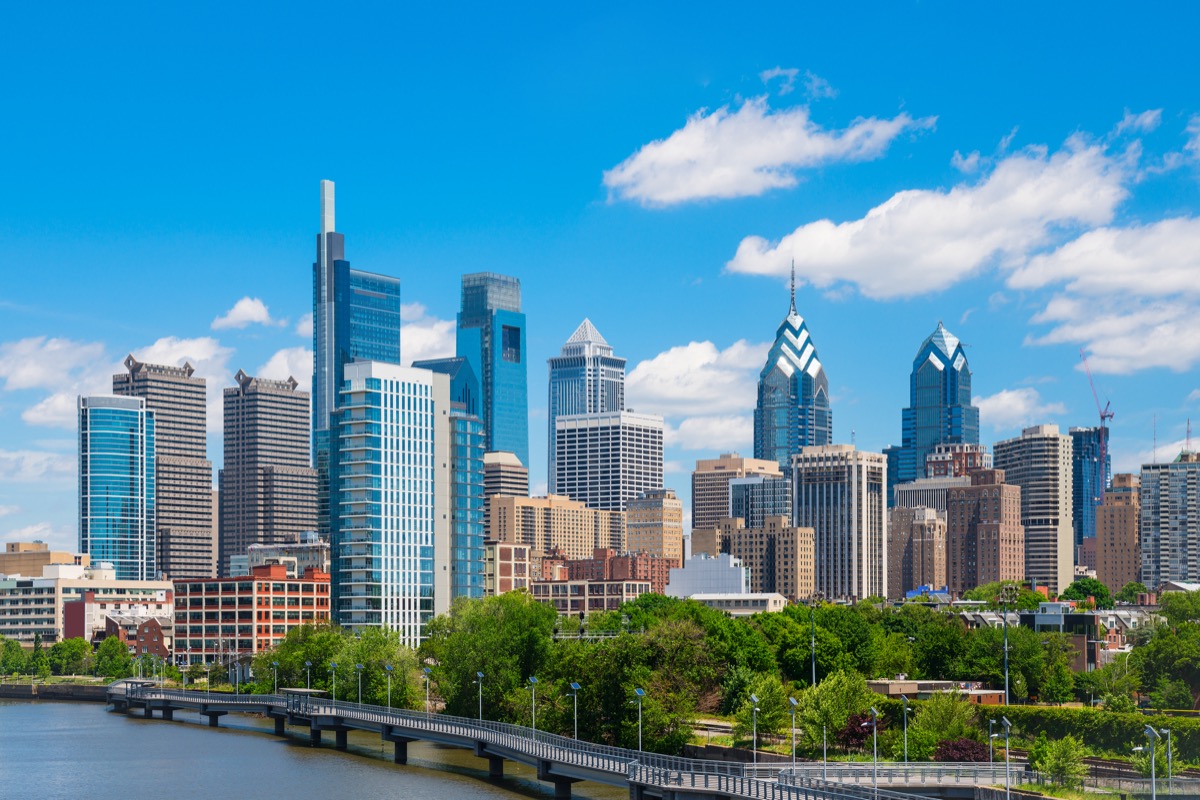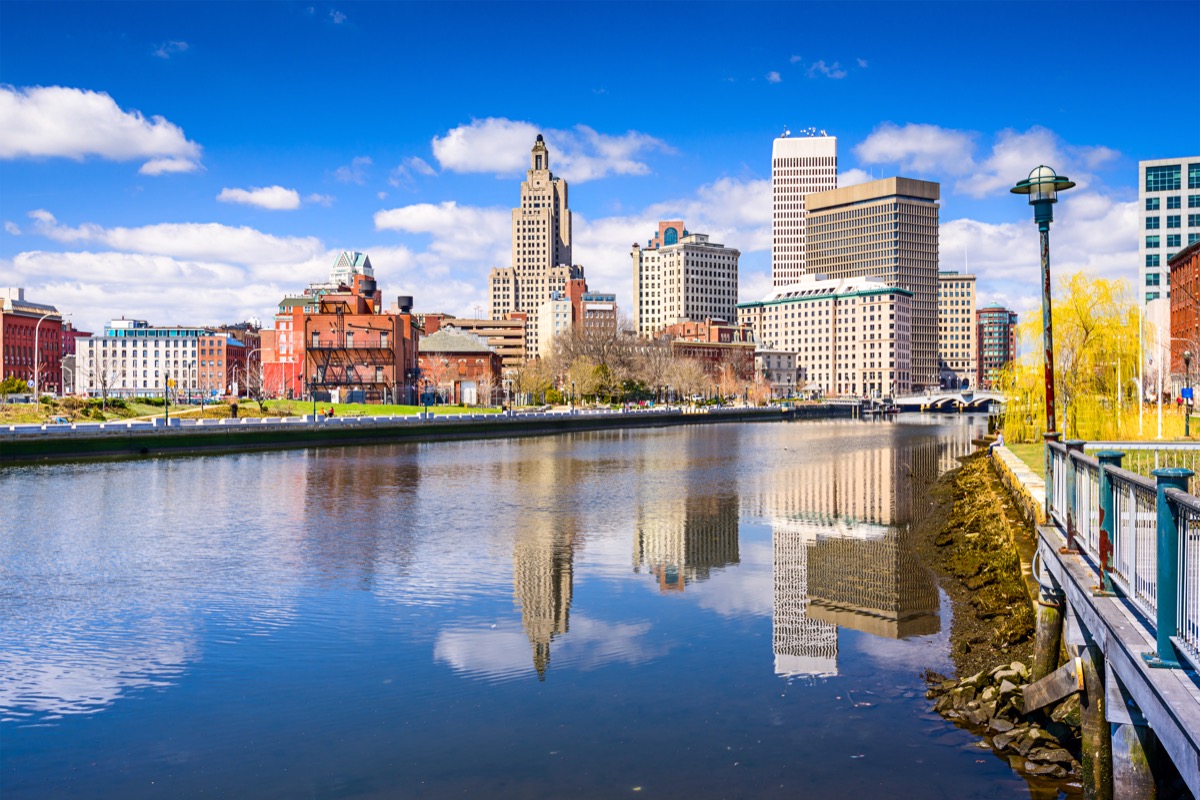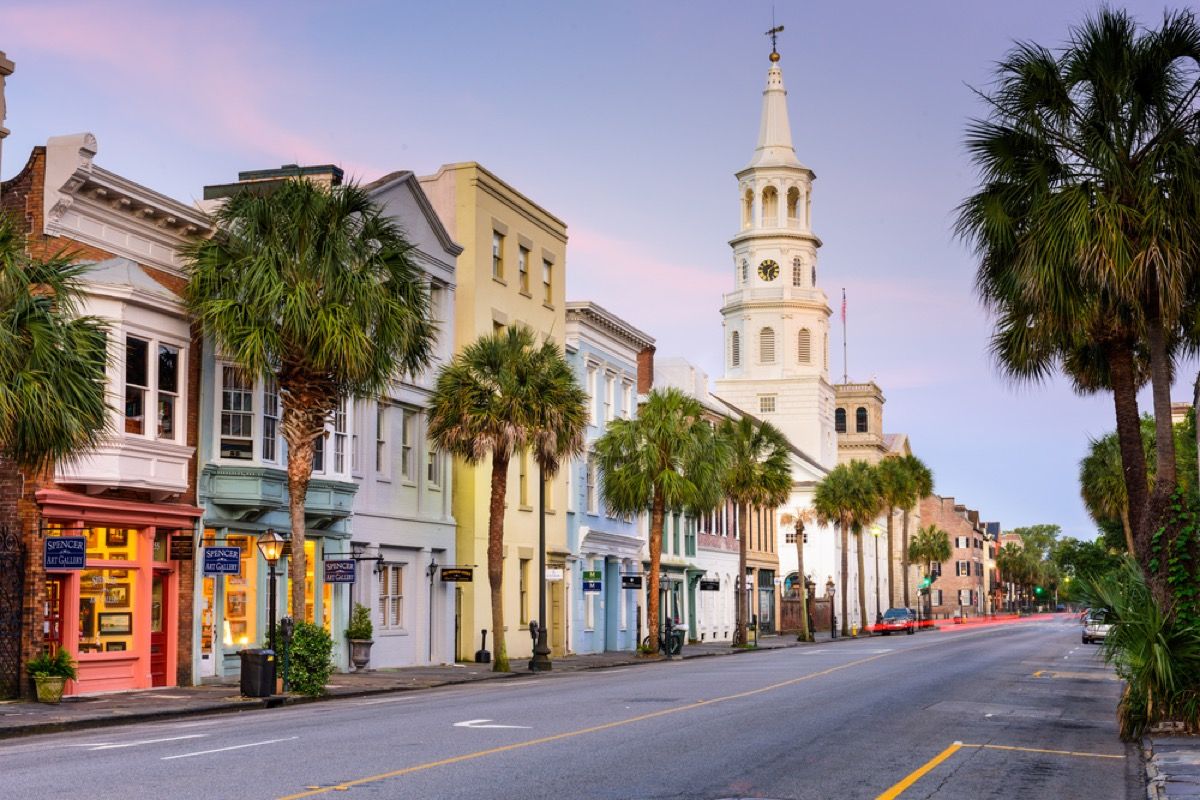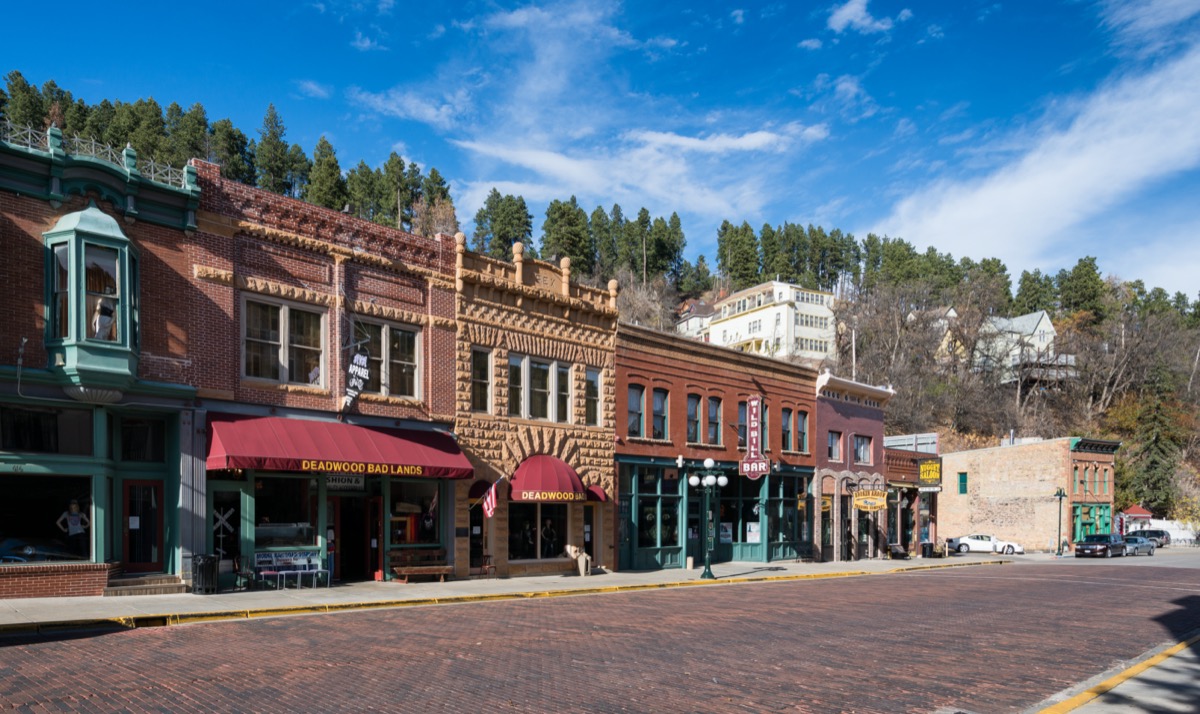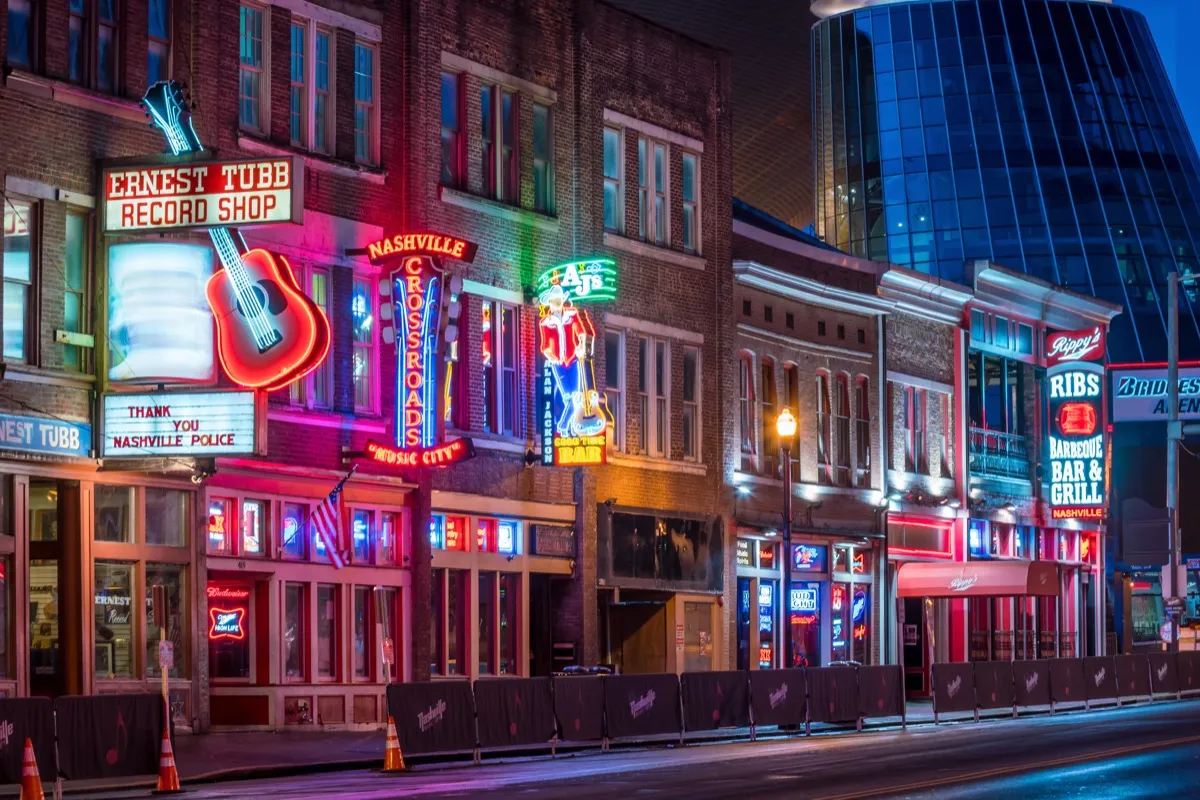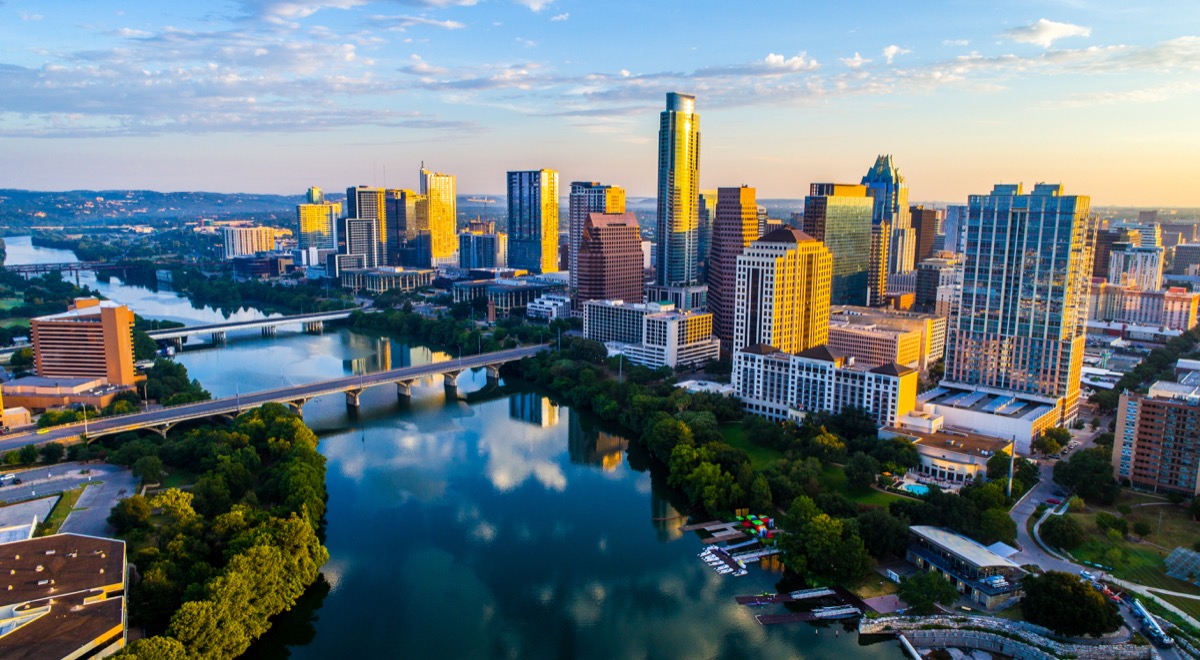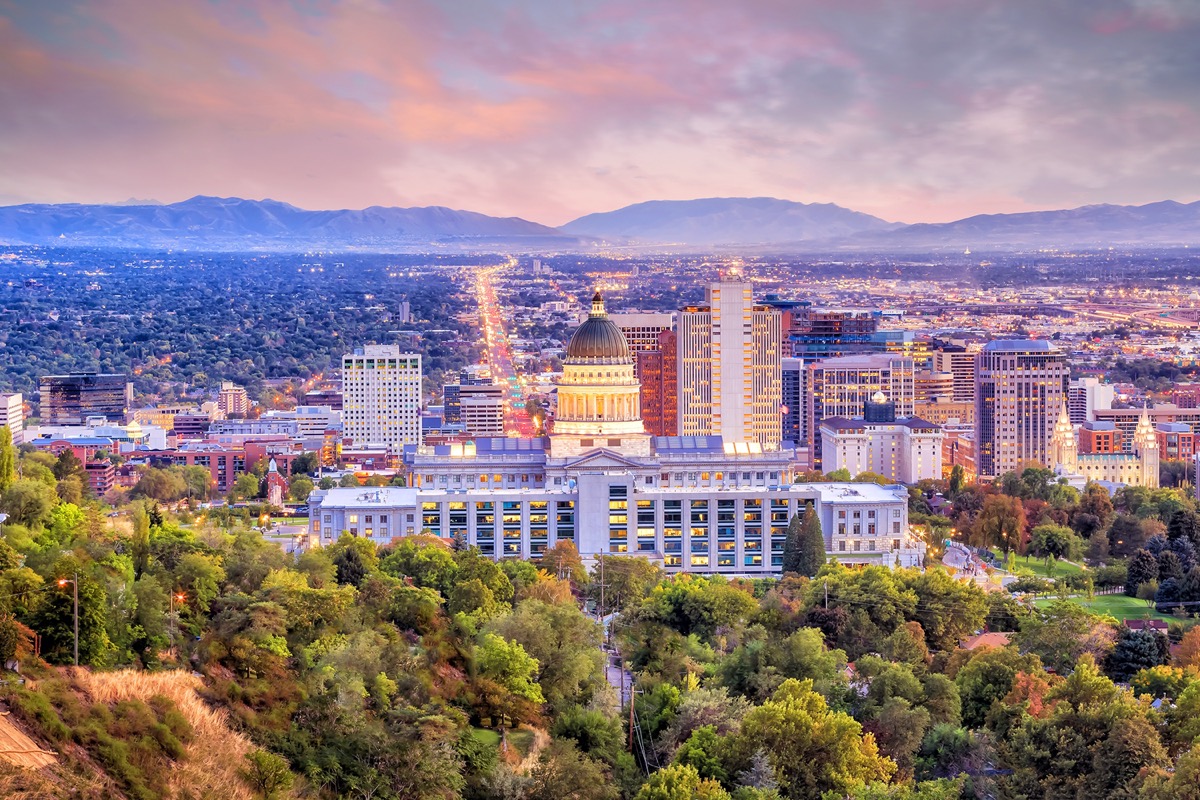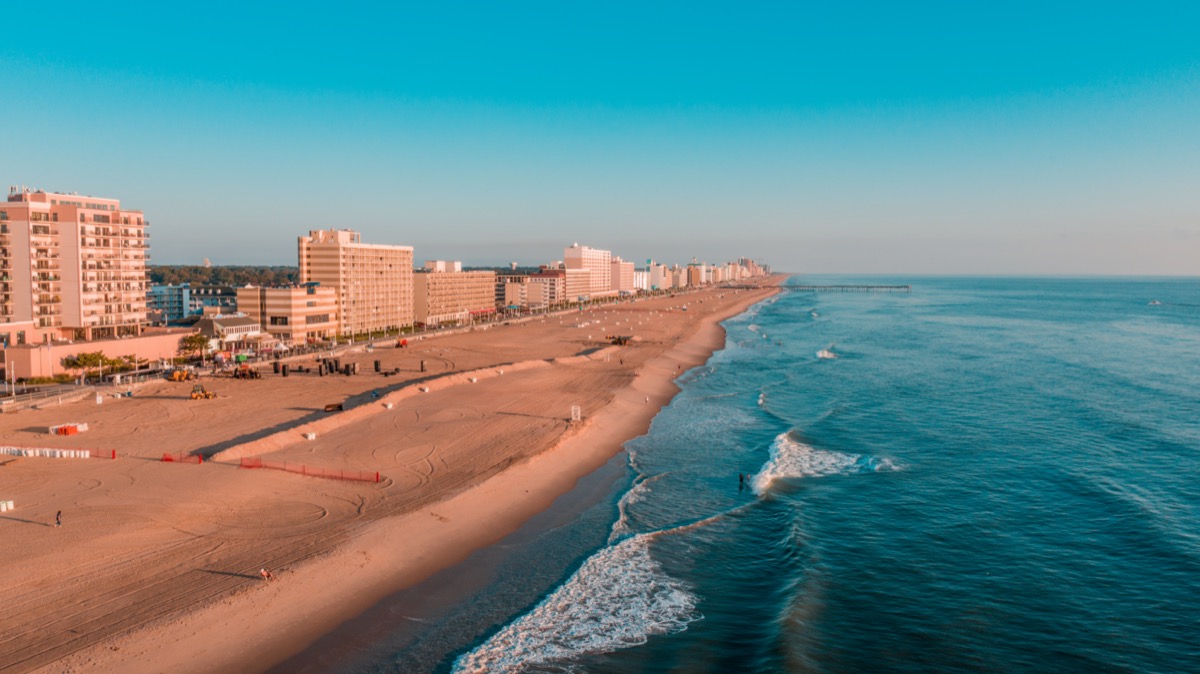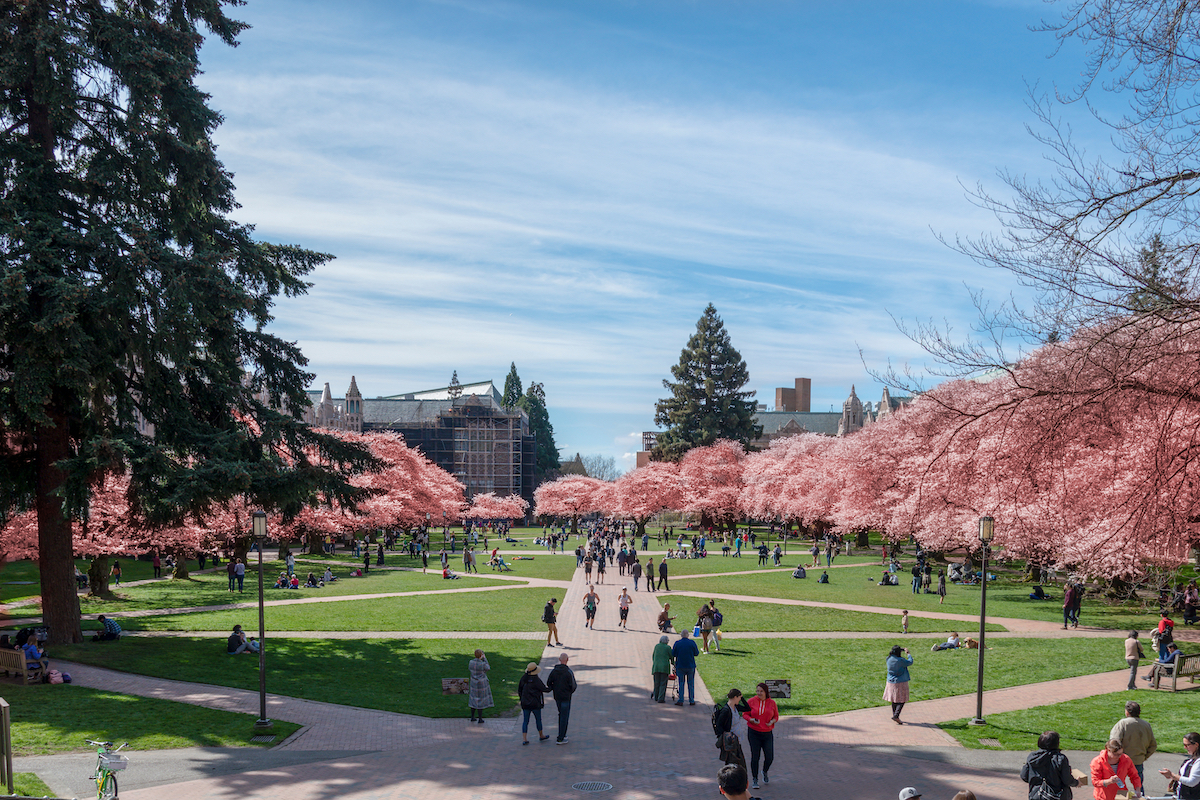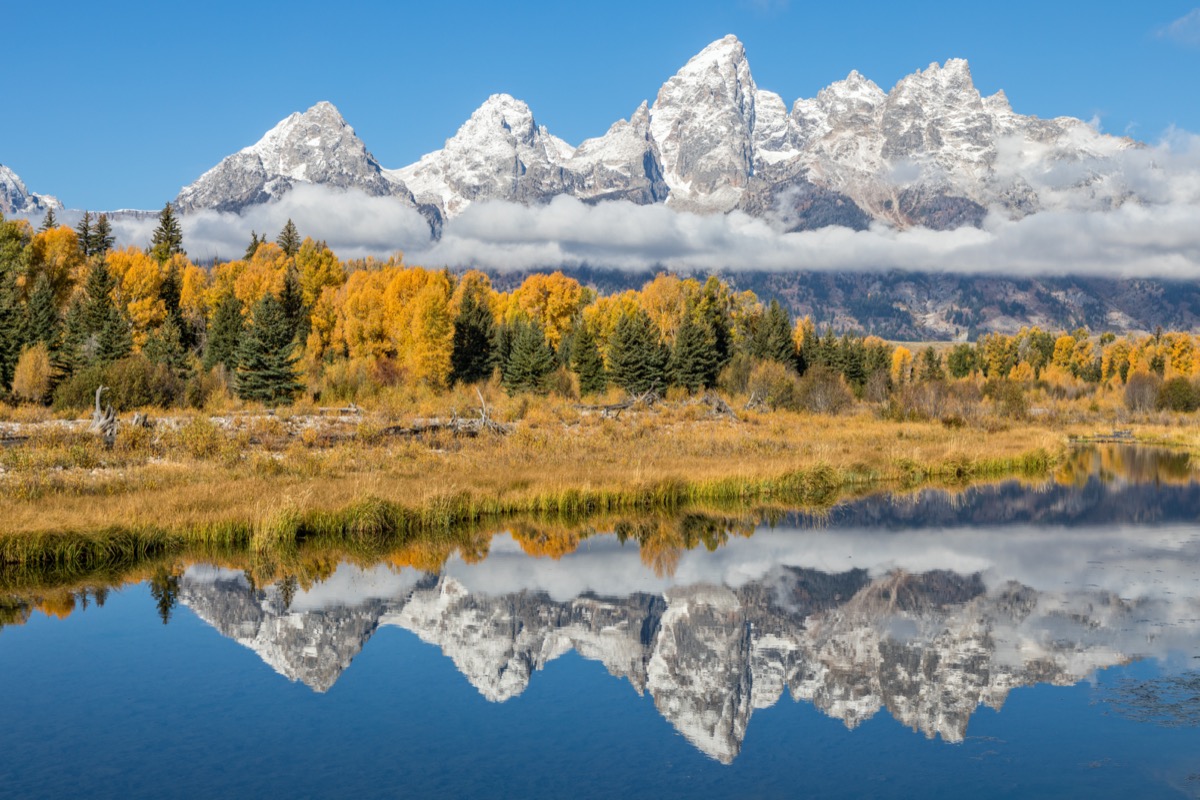As a result of these startling surges, many states are showing signs of a lockdown. Governors in some areas have instituted new restrictions on capacities and hours at restaurants and bars, some have issued curfews for residents, and others have officially instated stay-at-home orders, all in an attempt to stem the number of new infections. Read on to find out how close your state is to another lockdown, and to for more risks to be aware of, check out 4 Places Dr. Fauci Says He Wouldn’t Go Right Now. Read the original article on Best Life. Alabama Gov. Kay Ivey has been reluctant to issue new COVID restrictions, but the surge has forced her hand—to some extent. At a press conference on Nov. 5, Ivey announced that Alabama’s statewide mask order was being extended until Dec. 11, the Montgomery Advertiser reported. “I’m willing to keep the mask order in place while acknowledging that sooner rather than later it will be up to each of us to do the right thing, regardless of a government mandate or not,” she said. At the same time, however, Ivey announced a reduction in other coronavirus restrictions, arguing that they were not necessary with mask use. As of Nov. 8, Alabama has had emergency occupancy rates removed from retailers, gyms, and other venues. Salons, gyms, and restaurants are also allowed to forgo social distancing rules, provided people are wearing masks. On Nov. 12, Alaska Gov. Mike Dunleavy issued a statewide emergency alert, begging Alaskans to take steps to slow the spread of COVID, according to The Anchorage Daily News. The state is one of the few that does not have a mask mandate statewide, but Dunleavy told his residents in a video statement: “For the next three weeks, I am asking you as the governor of Alaska, that we do everything possible to reduce these cases and bend this trend downward.” Also, beginning Nov. 16, Dunleavy permitted local communities in Alaska to instate travel restrictions. Arizona saw one of the worst COVID surges over the summer, and now that numbers are climbing again, Gov. Doug Ducey is cracking down. He posted a video to Twitter on Nov. 10 to urge Arizonans to wear masks, physically distance, wash their hands, and stay home if they don’t feel well. “I can’t stress this enough. These are simple steps, and as we’ve seen, they can make a real difference,” he said. Previously, in an Oct. 29 COVID-19 briefing, Ducey urged caution, but announced no new preventive measures to stop COVID from spreading. The state also does not have a statewide mask order. And for more on what top experts think about the next phase of the pandemic, check out This Is Exactly When Dr. Fauci Says We Can “Throw Our Masks Away.” On Nov. 10, Arkansas issued new COVID guidelines specific to churches, which have been the site of numerous superspreader events throughout the state and the country at large. Per USA Today, Gov. Asa Hutchinson said all attendants should be required to wear masks, and that churches must enforce strict social distancing rules. “We respect the separation of church and state,” Hutchinson said at a conference. “They make their decisions on their own governance and how they handle things, but we do provide the guidelines we ask them to take into consideration from a public health standpoint and they’ve done a remarkable job in respecting those guidelines.” On Nov. 19, Hutchinson moved forward with an 11 p.m. curfew for bars, restaurants, and other businesses that allow alcohol to be consumed on premises, an Arkansas NBC affiliate reported. “This is a balanced approach that is limited and targeted as we work to reduce new COVID cases in our state,” the governor said. On Nov. 19, California Gov. Gavin Newsom announced a 10 p.m. curfew to start on Nov. 21, which requires non-essential work and gatherings to shut down from 10 p.m. to 5 a.m. every night until Dec. 21. The curfew applies to the state’s 41 counties that are in the most dire situations. In these counties—dubbed the purple tier—indoor dining and indoor religious gatherings are prohibited. According to USA Today, 95 percent of the state’s 40 million residents live in these 41 counties. If infection rates don’t improve, Newsom could extend the curfew to other counties or for longer than the planned month. And for more recent developments, check out These States Are Refusing to Lock Down as COVID Surges. On Nov. 9, Gov. Jared Polis urged Coloradans to buckle down in the coming few weeks by avoiding social interactions with people they don’t live with, maintaining good hand hygiene, and wearing a mask—he also extended the state’s face mask order for 30 days. “As hospitalizations increase, everyone needs to do better by socializing only with those who you live with, wearing a mask and staying six feet apart, so we can get our numbers under control,” Polis said in a statement. On top of that, certain cities are taking action. According to The Denver Post, Denver issued a 30-day curfew that kicks in at 10 p.m. with violators facing a fine of up to $999 or up to 300 days in jail. A spokesperson for Denver Mayor Michael Hancock said the city’s new Home by 10 Order, which began Nov. 8, is “essentially the last major step city officials can take before leaning on yet another stay-at-home order,” The Denver Post reports. Additionally, on Nov. 18, officials announced that Denver public schools were pausing in-person learning. In response to Connecticut’s surging COVID cases, Gov. Ned Lamont rolled the state back to Phase 2 of its reopening protocols, which forces restaurants to close by 9:30 p.m. and brings their limited capacity down to 50 percent from 75 percent. Phase 2 also limits event venues to 25 people indoors and 50 outdoors, and caps religious gatherings at 50-percent capacity or 100 people, whichever is smaller.ae0fcc31ae342fd3a1346ebb1f342fcb “We are putting in these restrictions on a statewide basis now to make sure we don’t have to do more severe things later,” Lamont said at a Nov. 2 press briefing. “Stay safe, stay home as much as you can and otherwise be careful.” Effective Nov. 23 at 8 a.m., Delaware is limiting indoor gatherings to 10 people and indoor dining at restaurants to no more than 30 percent capacity, Gov. John Carney announced on Nov. 17. The state is also restricting event venues, including weddings, places of worship, performances, political meetings, and funerals to 30 percent capacity. Delaware’s Department of Correction also recently suspended in-person prison visitation. And for more up-to-date COVID news delivered right to your inbox, sign up for our daily newsletter. At the end of September, Florida Gov. Ron DeSantis made headlines for removing all state-level restrictions on businesses and allowing bars and restaurants to reopen to full capacity. But while the reversal of safety measures has since led to an upward trajectory of coronavirus cases, DeSantis has stood firm on his decision to allow local governments to set public health orders in Florida, which also has no statewide mask mandate. “The governor will not lockdown and hurt families who can’t afford to shelter in place for six weeks—especially not for a virus that has a 99.8 percent survival rate,” a spokesperson for the governor told a local Miami CBS News affiliate. Georgia’s COVID cases are also on the rise, leading Gov. Brian Kemp to tweet on Nov. 10 that “it is now more important than ever for all Georgians to double down on prevention measures to stop the spread of COVID-19.” The tweet was accompanied by a video message from Kathleen Toomey, MD, commissioner of the Georgia Department of Public Health, who urged everyone to wear masks, social distance, and get a flu shot. Then, on Nov. 13, Kemp announced an extension of Georgia’s social distancing and sanitization restrictions for businesses, gatherings, and long-term care facilities. Under the existing order, gatherings larger than 50 people are banned. Notably, Georgia does not have a statewide mask mandate, but local officials can impose their own face covering orders, as long as they don’t infringe upon businesses and residences. While new coronavirus cases in Hawaii have remained the lowest in the country, the state is still taking additional precautions. Hawaii News Now reported that Gov. David Ige issued a new statewide mask mandate on Nov. 16 following criticism that the previous mask mandate was inconsistent across the islands. Businesses can now refuse admission to anyone who is not complying with the law. “We’ve had requests from both sides of this. The businesses don’t really want to be responsible for enforcing, and yet they want me to make it clear that anyone would be required to wear a mask before entering the property,” Ige said at a press conference. “I am making it clear that everyone who goes to any business is required to wear a mask, and that way the businesses can say that it’s really because I’ve ordered it.” After seeing cases of coronavirus spike, officials in Idaho decided to roll back the state to Stage 3 of its tiered reopening system. As a result, indoor gatherings are now limited to 50 people or less and outdoor gatherings are limited to 25-percent capacity of their venue. The moves mark a change in strategy for Idaho Gov. Brad Little, who had previously left most COVID ordinance decisions up to city and local officials. However, the state still does not have a mask mandate. “Things changed for the worst,” Little admitted at a press conference on Oct. 26. “Idaho is at a critical juncture. This is unacceptable and we must do better.” In response to his state’s recent spike of COVID cases, Illinois Gov. J.B. Pritzker confirmed that most of the state’s 11 regions should be tightening restrictions, which include a ban on indoor dining and bar service and all outdoor dining must close at 11 p.m. Any gatherings are also limited to under 25 guests or 25 percent of overall room capacity, whichever is smaller. On Nov. 17, Pritzker announced new statewide COVID safety measures. Effective Nov. 20, gyms can only remain open if they’re by appointment and masks are worn, retail and personal can businesses are limited to 25 percent capacity, and all casinos, museums, and theaters are closed. There’s also a pause on indoor recreation, while outdoor activities are limited to 10 people or less and face coverings are required. “It’s our best effort to avoid a stay-at-home order and save lives,” Pritzker said at a press conference. On Nov. 11, Gov. Eric Holcomb moved the state of Indiana out of its Stage 5 of reopening after nearly two months of soaring COVID cases and hospitalizations. Holcomb’s executive order limits gatherings to 25 people in the highest-risk red counties and 50 people in the next-riskiest orange counties (larger events need approval from local health officials). Indoor sports and extracurricular events among kindergarteners to high-school seniors were reduced to 25-percent capacity in orange counties and only parents or guardians can attend events in red counties. “Unfortunately, too many of us and around the country have let our guards down,” Holcomb said in a statement. “Stage 5 was being lost on people or it was being misinterpreted. … Stage 5 to many was translated to or received as, ‘We’re past it, we’re at the final stage, there’s nothing more we need to do.’” Iowa Gov. Kim Reynolds also recently took steps to curb the spread of COVID. Effective midnight Tuesday, Nov. 10, any gathering of more than 25 people indoors or 100 people outdoors is prohibited unless all attendees over the age of 2 wear masks, KCCI Des Moines reports. Additionally, events of more than 10 people must ensure six feet of social distancing between groups. For youth and high school sports events, all spectators over 2 must wear masks and stay six feet apart, and only two spectators are allowed per athlete. Reynolds’ new order also mandates that salons, barbershops, massage therapy establishments, tattoo shops, and tanning facilities require masks and keep customers six feet apart. The mandate will remain in effect for 30 days, with anyone who defies the order facing a potential misdemeanor charge. Reynolds said at a press conference on Nov. 10 that these restrictions are an attempt to avoid shutting down businesses across Iowa. But when those numbers still surged, Reynolds was forced to take further action. She issued her first statewide mask mandate on Nov. 17 and gave residents a stern warning. “The pandemic in Iowa is the worst it has ever been,” Reynolds said at a press conference. “No one wants to do this. I don’t want to do this. [But] if Iowans don’t buy into this, we lose. Businesses will close once again, more schools will be forced to go online, and our health care system will fail.” On Nov. 19, Kansas Gov. Laura Kelly issued a new statewide mask mandate, a local ABC news affiliate reported. The executive order allows some flexibility for Kansas counties, which have a week to determine their respective mask guidelines, or they will be opted into the statewide mandate automatically. “We have reached a new stage in our fight with this virus,” Kelly said at a press conference. “How we choose to respond can turn the tide for our businesses, our hospitals and our schools. Today’s actions are a bipartisan package of recommendations from legislators, health professionals, and business leaders to increase participation in common sense COVID-19 prevention practices.” The new executive order goes into effect Nov. 25 at midnight. As cases rose in October, Kentucky Gov. Andy Beshear instructed residents of “red zone” counties (which is the majority of the states’ 120 counties) to follow a set of recommendations, including limiting in-person shopping, avoiding indoor dining at restaurants and bars, and not attending gatherings of any size. But when cases failed to decline, he took further action on Nov. 18, announcing a whole host of new restrictions. From Nov. 20 until Dec. 13, restaurants and bars must close indoor dining, indoor gatherings are limited to two families with no more than eight people, gyms are limited to 33 percent capacity, and weddings and funerals are limited to 25 people. Additionally, starting Nov. 23, all public and private K-12 schools must stop in-person learning for the rest of the semester. Louisiana will stay in Phase 3 of its coronavirus reopening plan through Dec. 4, Gov. John Bel Edwards announced on Nov. 10. “The mitigation measures we have in place are slowing the spread of COVID and saving lives and now is not the time to let up,” Edwards said, as reported by USA Today. “All Louisianans need to continue to work together to slow the spread of COVID in our state and keep hospitalizations down so that we do not risk our ability to deliver health care to our people.” On Nov. 19, Edwards delivered an update on the COVID outbreak in the state, which continues to spread at an alarming rate. A Louisiana ABC affiliate reported that Edwards asked state residents to continue doing what they can to slow the spread of the virus—namely, washing their hands, wearing masks, and social distancing. On Nov. 5, Maine Gov. Janet Mills issued an executive order requiring residents to wear a face covering regardless of whether they can physically distance from others as. The new order strengthened the state’s previous mask mandate that required face masks only if physically distancing wasn’t possible. “This deadly and dangerous virus is spreading all across our state,” Mills said in a statement. “Protect your family. Protect a health care worker. Protect the elderly. Wear your face covering. Save lives. It is that simple.” Then, on Nov. 19, Mills issued an order requiring all businesses that provide seated food and drink service close by 9 p.m., beginning Nov. 20. “As we enter the colder months and a holiday season when we customarily gather with friends and family, we are also entering a new and dangerous phase of the pandemic,” Mills said in a statement. “This targeted and temporary step will reduce extended gatherings while keeping the businesses open. Other steps may be necessary in the coming weeks if we do not get this virus under control.” Saying that coronavirus numbers had “crossed over into the danger zone,” on Nov. 11, Maryland Gov. Larry Hogan announced a return of public health restrictions not seen in the state since the summer. Effective Nov. 11, all restaurants in the state were forced to reduce their capacity from 75 percent to 50 percent. The new health advisory also caps indoor gatherings at 25 people, and an existing travel advisory (which warns against non-essential travel to states with high infection rates) will be heightened. State health officials are also “strongly advising against” indoor gatherings of more than 25 people and nonessential travel to states with a positivity rate above 10 percent. Those who leave the state must get tested and self-quarantine. “More people are getting infected with the virus, more people are being hospitalized, more people are going into intensive care, and more Marylanders are dying,” Hogan said. “The actions we are taking today are absolutely necessary to help us withstand this surge, to save lives.” As numbers continued to surge, on Nov. 17, Hogan announced that restaurants, bars, and other establishments must close by 10 p.m. nightly, and all retail businesses, houses of worship, and other indoor venues must limit capacity to 50 percent, beginning Nov. 20. “We are in a war right now, and the virus is winning,” Hogan said. “I’m pleading with the people of our state to stand together a while longer to help us battle this surging virus.” A growing spike in COVID cases has driven Massachusetts Gov. Charlie Baker to enact new measures to protect residents. He’s strengthened the state’s mask mandate by requiring them to be worn at all times in public both indoors and outdoors. He also instituted a nightly stay-at-home advisory, which is an informal curfew, between 10 p.m. and 5 a.m. Baker’s order also requires all table-service restaurants, gyms, theaters, and casinos to end service by 9:30 each night. In addition, private gatherings are limited to 10 people inside and 25 outdoors, and must end by 9:30 p.m. as well. “COVID has come with all kinds of difficult decisions, difficulties—and, in many cases, tragedies—for virtually everybody,” Baker said during a Nov. 2 news conference. “One of the things that’s critical to us is that schools stay open, and that businesses continue to be able to operate.” Faced with a rising tide of new COVID-19 infections, in early November, the Michigan Department of Health and Human Services ordered residents to wear masks whenever there’s more than two people present at a store, office, or school. Additionally, patrons were asked to provide their phone numbers for contact tracing purposes. But when numbers still weren’t improving, on Nov. 15, Gov. Gretchen Whitmer announced new restrictions to stop COVID in the state, effective Nov. 18. In-person classes at high schools and colleges statewide are suspended for three weeks, eat-in dining at restaurants and bars is also banned for three weeks, and organized sports and group exercise classes that aren’t on the college or professional levels are also on hold. Casinos and movie theaters are also closing temporarily and indoor gatherings at home are limited to two households mixing at most. “We are in the worst moment of this pandemic to date,” Whitmer said during a televised news conference on Nov. 15. “The situation has never been more dire. We are at the precipice and we need to take some action.” And for more on your personal coronavirus risk, know that If You Live With Someone This Age, You’re More Likely to Get COVID. Amid the Midwest surge, Minnesota Gov. Tim Walz made the decision to begin rolling back the state’s reopening on Nov. 10. During a press conference, he announced that as of Nov. 13, all bars and restaurants are limited to 50-percent capacity both indoors and outdoors and must end table service by 10 p.m. Walz also limited public social gatherings to 10 people from no more than three households, and capped the attendance of weddings and funerals at 50 guests, beginning Nov. 27. “This is where we can have the biggest impact in the shortest amount of time without the massive disruption,” Walz said. In September, Mississippi Gov. Tate Reeves relaxed his statewide restrictions on dining, shopping, and gyms, also allowing the state’s mask mandate to expire except in schools. But as cases rose in October and the state set its record for the most new cases in a day on Nov. 5, Reeves reinstated the mask mandate and issued gathering limits in nine Mississippi counties (indoor social gatherings are now capped at 10 people and outdoor gatherings can’t exceed 50 people). Then, on Nov. 11, Reeves announced he was extending the mandate until Dec. 11 for residents in 15 counties across the state. “I know that we are all tired and ready to move on, but the virus is still here,” he said in a statement. “We’ve gotten far better at dealing with it and allowing for life to go on, but we’re not all the way there yet. Keep fighting and protecting the most vulnerable in your life.” Missouri Gov. Mike Parson has made it clear that he is not in favor of a statewide mask mandate, and his opinions have not changed on the matter. A local NBC affiliate reports that on Nov. 19, Parson extended Missouri’s state of emergency through March 31, 2021, but he is otherwise unwilling to introduce new COVID mitigation measures. “I have been very clear on that from the beginning and that hasn’t changed,” he said. The governor is also not issuing any executive orders on people gathering with others outside of their household, a fraught topic as Thanksgiving approaches. “I’m not going to mandate who goes in the front door of your home,” Parson said. On Nov. 17, Gov. Steve Bullock ordered bars, restaurants, and casinos to close at 10 p.m. and to operate at 50 percent capacity. He also is requiring that tables are limited to six people and that there is six feet of distance between tables. In addition, Bullock announced a 25 percent capacity limit for indoor crowds and gatherings where social distancing is not possible or practiced. “The situation is serious in Montana, and it is serious across the nation,” Bullock said, according to the Great Falls Tribune. Nebraska Gov. Pete Ricketts reintroduced some restrictions in mid-October as the state’s situation worsened, but the state still does not have a mask mandate. On Oct. 16, Ricketts announced he was limiting indoor venue capacity to 50 percent and restricting table sizes at restaurants and bars. The surge, according to Ricketts, was “from gatherings of people’s homes, maybe friends on a Friday night, or having family over for a get together,” he said at a press conference. “Now it pains me to put in place these restrictions on people’s personal liberty… but it’s been necessary to be able to preserve that hospital capacity.” On Nov. 11, Ricketts introduced new COVID measures requiring people to maintain six feet of distance “in all instances” in public spaces, requiring masks for employees and customers at indoor businesses, and limiting attendance for all indoor youth extracurricular activities to the players’ household members only. Then, on Nov. 16, Ricketts issued another warning: He said that if Nebraska hits a threshold of 1,170 people hospitalized due to COVID, he will impose restrictions on the size of gatherings, according to KETV-TV in Omaha. That means a 10-person capacity limit on indoor gatherings and 20-person limit on outdoor ones. Recently, Gov. Steve Sisolak gave Nevadans an ultimatum: get numbers down in two weeks, or expect moves toward a lockdown. At a press conference on Nov. 10, Sisolak said, “Nevadans need to accept and understand this reality now, and change behaviors immediately. In the next two weeks, we must see a significant reversal of the current trends, which are deeply concerning now.” He also asked local governments to enforce the state’s existing COVID mandates and urged businesses to allow their employees to telework. Then, as the situation continued to decline, Sisolak tweeted on Nov. 14: “We must take action to change the trajectory now or we will need to implement tougher restrictions and mitigation measures to protect our communities.” On Nov. 14, Gov. Chris Sununu issued a mask mandate and asked residents of New Hampshire returning from trips outside of New England to quarantine for 14 days or seven days if they produce a negative COVID-19 test. Other than that, there are very few restrictions in New Hampshire. And for more states with testing guidelines, check out You Can’t Enter These 8 States Without a Negative COVID Test. New Jersey Gov. Phil Murphy recently ordered non-essential businesses in Hoboken, Newark, and Paterson—the three largest cities in New Jersey—to close by 8 p.m. every day and soon followed with a statewide expansion of shutdowns, ordering restaurants to close by 10 p.m. nightly, starting Nov. 12. Towns and counties can close businesses by 8 p.m. if they so choose, according to Murphy’s new order. “Our approach to this second wave is to act surgically to hot spot areas,” Murphy said at a press conference. “That means giving local officials the ability to take action to prevent localized hot spots from becoming COVID wildfires.” And in a new set of restrictions just ahead of the Thanksgiving holiday, Murphy announced on Nov. 16 that the attendance limit for indoor gatherings would be lowered from 25 to 10 people and that outdoor event limits would drop from 500 to 150 people. When Yahoo Finance asked Murphy on Oct. 30 about issuing a second round of non-essential business closures across the state similar to what was in place in the spring, the governor said nothing was out of the question. “We’re not there yet, but all options are on the table,” he said. “If we have to shut the whole place down we will. We were one of the first, if not the first state to do that in March. I just hope we can avoid it again this time.” In response to her state’s surge in late October, New Mexico Gov. Michelle Lujan Grisham ordered that hotels must reduce their maximum hotel occupancy rates; gatherings of more than five people are prohibited; and bars, restaurants, and retail businesses must close by 10 p.m. every night. Grisham’s office also issued a statement saying that “all New Mexicans have been instructed to stay home except for outings absolutely necessary for health, safety, and welfare. These additional restrictions have been enacted to aggressively minimize person-to-person contact and ensure spread is mitigated.” But on Nov. 13, Grisham took things a step further, announcing a two-week “reset,” reinstating previous strict COVID restrictions from the spring. Through Nov. 30, New Mexicans must shelter in place, and no non-essential businesses or nonprofits can operate in-person. Meanwhile, essential businesses are ordered to reduce operations and occupancy to the “greatest possible extent.” On Nov. 2, amid climbing case numbers, Gov. Andrew Cuomo announced changes to New York’s joint travel restrictions that now require anyone traveling from any state except bordering Pennsylvania, Connecticut, and New Jersey to quarantine for three days after arriving and then receive a negative COVID-19 test result on the fourth day. The new system replaces a constantly changing list of states that were seen as high-risk based on coronavirus cases per capita and positive test rates. Then, on Nov. 11, Cuomo started seriously cracking down. He ordered that gyms and bars and restaurants with a liquor license must close by 10 p.m., beginning Nov. 13, and indoor gatherings at private homes are limited to no more than 10 people. “Avoid ‘Living room spread,’” Cuomo cautioned on Twitter on Nov. 14. “The data shows that COVID is spreading in smaller, indoor settings. We’re asking New Yorkers to act responsibly. To limit gatherings with people outside of your household. We can protect each other if we choose to.” Also, on Nov. 18, New York City Mayor Bill de Blasio announced that the city’s public school system was pausing in-person learning again. And for more on kids and COVID, check out The CDC Just Quietly Removed Its Most Controversial Guidelines. On Nov. 10, Gov. Roy Cooper announced that North Carolina will remain paused in Phase 3 of its reopening plan for at least three more weeks, but he also lowered the limit on indoor gatherings from 25 people to 10. “As frustrating and painful as it is, we must keep fighting a little while longer,” Cooper tweeted on Nov. 10. “We don’t want to let the last eight months of sacrifices go to waste by dropping our guard or ignoring safety measures during family gatherings. We’ve come too far to lose our focus now.” The state with the nation’s worst COVID outbreak only recently started cracking down. On Nov. 13, North Dakota Gov. Doug Burgum mandated all residents wear masks indoors, beginning Nov. 14 and lasting until Dec. 13. “Our situation has changed, and we must change with it,” the governor said in a statement on Nov. 13. Burgum also directed all bars and restaurants to limit capacity to 50 percent, and ordered all in-person service to end at 10 p.m. Additionally, large-scale venues for weddings and other big events are now limited to 25-percent capacity. And to see how the outbreak is looking in your neck of the woods, check out This Is How Bad the COVID Outbreak Is in Your State. During a statewide address on Nov. 11, Ohio Gov. Mike DeWine said that bars, restaurants, and gyms could be ordered to close a week from Thursday “if the current trend continues and cases keep increasing.” They did, and he did. DeWine announced a three-week stay-at-home order for Ohioans starting Nov. 19, instituting a 10 p.m. to 5 a.m. nightly curfew, during which most retail businesses must also close. On Nov. 16, Gov. Kevin Stitt announced new restrictions for the state of Oklahoma. Effective Nov. 19, bars and restaurants must close by 11 p.m., except for to-go and drive-thru orders. He also required that all state employees must wear masks while at work, though he has been criticized for frequently appearing without one. Taking serious action on Nov. 13, Oregon Gov. Kate Brown announced a partial lockdown for the state, beginning on Nov. 18. Restaurants and bars have regressed to take-out service only and recreation centers like gyms, museums, zoos, gardens, and theaters have closed again. Also, grocery stores are limited to 75-percent capacity, visits to nursing homes are prohibited, and businesses are required to have employees work from home as much as possible. Social gatherings, whether inside or outside in Oregon, now cannot include more than six people from two different households coming together. And for more on how COVID is spreading now, check out These Are the 6 Worst Places You’re Going Right Now, New Study Says. COVID cases are rising in Pennsylvania, and in mid-November, things started to change. On Nov. 16, city officials in Philadelphia announced a new set of restrictions on businesses similar to those that were in place in the city during the initial outbreak of the pandemic in the spring. Starting Nov. 20, all indoor gatherings and parties in private homes are banned, including weddings and funerals; gyms, libraries, casinos, bowling alleys, and museums must close; restaurants must cease indoor dining and limit all outdoor tables to four seats; retail stores must operate at a reduced capacity of one person per 1,000 square feet; and outdoor events will be capped at 10 percent capacity, with no food and beverage service allowed to ensure that masks are worn at all times. “Obviously, we don’t enjoy doing this, but we cannot ignore the numbers and we have to take these precautions in order to get us back to a healthy situation,” Philadelphia Mayor Jim Kenney said at a press conference. Additionally, on Nov. 17, the state’s Health Secretary Rachel Levine, MD, issued a new COVID order that requires anyone who enters Pennsylvania to be tested within 72 hours upon arrival, effective Nov. 20. Without a negative test, visitors must quarantine for 14 days upon arrival (this excludes commuters and those traveling for medical reasons). The state’s mask mandate has also been updated to require face coverings outdoors if social distancing isn’t possible. And for more advice on how to avoid the virus, check out The Worst Thing You’re Doing as COVID Surges, Doctor Warns. After being hit by both major COVID waves in the spring and summer, Rhode Island started to see case numbers climb again in October. As a result, Rhode Island Gov. Gina Raimondo limited indoor gatherings to no more than 10 people and closed indoor sports facilities. In early November, she took things a step further by setting a 55-percent capacity limit on indoor venues like movie theaters and places of worship, and recommending people stay home from 10 p.m. to 5 a.m. daily. However, numbers have still not improved and on Nov. 12, Raimondo warned that Rhode Island is “moving toward another lockdown,” which she has attributed to residents continuing to attend social gatherings, particularly indoors without masks. At a news conference, Raimondo said she was “pleading” with Rhode Islanders to take the pandemic seriously. “I worry that we are getting close to some pretty extreme measures,” she added. On Oct. 2., restaurants were allowed to reopen to full capacity in South Carolina and now, the state is experiencing a COVID surge not seen since early August. However, on Nov. 7, Gov. Henry McMaster’s office said there are no plans to enact any new statewide restrictions. South Dakota Gov. Kristi Noem has been one of the harshest critics against COVID restrictions in the U.S., even as her state continues to have the second-worst outbreak in the country (behind neighboring North Dakota). The surging numbers do not appear to have moved Noem to lock down in any way. “We already know that lockdowns DON’T stop the spread of the virus,” she tweeted on Nov. 12. “However, they destroy small businesses and jobs, and they make it difficult for families to put food on the table.” On Nov. 17, Tennessee Gov. Bill Lee said while he’s “not going to mandate how a family gathers at Thanksgiving,” he wants families to “think hard” about what plans they make. Tennessee does not have a statewide mask mandate, but on Nov. 10, some local officials voted to support pushing Lee to instate one. The Lone Star State is still struggling with COVID. On Nov. 2, Texas officially surpassed California as the state with the most confirmed coronavirus cases in the U.S. It also became the first individual state in the nation to hit 1 million reported cases of coronavirus. In El Paso, where the surge has been particularly deadly, County Judge Ricardo Samaniego issued a two-week stay-at-home order for all citizens with a daily curfew for the public from 10 p.m. to 5 a.m. He also ordered non-essential businesses to close for two weeks as of Oct. 29. But the order resulted in a lawsuit, and on Nov. 13, Texas Attorney General Ken Paxton successfully had the order overturned on the grounds that it went beyond the limits set by Gov. Gregg Abbott’s executive order, which controls businesses across the state. “We are not going to have any more lockdowns in the state of Texas,” Abbott said in a radio interview. “Our focal point is gonna be working to heal those who have COVID, get them out of hospitals quickly, make sure they get back to their normal lives.” And if you’re concerned you could be sick, This Is the Easiest Way to Tell If You’ve Been Exposed to COVID. After long refusing to take the decision away from local authorities, Utah Gov. Gary Herbert announced on Nov. 8 that he would be issuing a statewide mask mandate, beginning Nov. 9. “Masks do not negatively affect our economy, and wearing them is the easiest way to slow the spread of the virus. We cannot afford to debate this issue any longer. Individual freedom is certainly important, and it is our rule of law that protects that freedom,” Herbert said during a press conference. “Laws are put in places to protect all of us. That’s why we have traffic lights, speed limits, and seatbelts, and that’s why we now have a mask mandate.” As part of the new mandate, Herbert also announced that there would be a two-week pause on all extracurricular activities, including athletic events with the exception of high school championship games and college events where sanctioned testing was in place. The governor also limited “casual social gatherings” to members of the same household only. In addition, Herbert introduced a new tiered “Transmission Index,” placing each county into one of three levels of alert—high, moderate and low—using metrics like cases per capita, infection rates, and hospital capacity. Each county needs to follow new masks guidelines, social distancing rules, and other requirements based on their risk level. On Nov. 10, Gov. Phil Scott ordered that anyone traveling into or out of Vermont for nonessential reasons is required to quarantine. “Vermont will temporarily require a 14-day quarantine for all non-essential travel, increase compliance checks and expand testing to find the virus earlier and contain it faster,” a press release from his office announced. Then, on Nov. 13, Scott announced new restrictions on social gatherings, banning cross-household gatherings and ordering restaurants to end in-person service by 10 p.m. each night. The state is also requiring restaurants, gyms, museums, and other establishments to “maintain a 30-day log of employee and guest names and contact information in case contact tracing is required by the Health Department.” The restrictions went into effect at 10 p.m. on Nov. 14. On Nov. 13, Virginia Gov. Ralph Northam announced a new set of restrictions that took effect at midnight on Nov. 15. According to the new order, the state’s cap on gatherings was reduced from 250 to 25, the mask requirement now applies to younger children, and alcohol sales are prohibited at dining establishments, breweries, and wineries after 10 p.m. The gathering ban applies to social events, but does not affect schools or restaurants. While not as strict as the state’s earlier lockdown in March, Washington Gov. Jay Inslee announced a set of new COVID restrictions on Nov. 15, which went into effect on Nov. 16 at midnight and will last through Dec. 14. “The time has come to reinstate restrictions on activities statewide to preserve the public’s well-being and to save lives,” Inslee said. Under the new order, indoor gatherings with members of other households are prohibited unless participants have quarantined and/or have proof of a recent negative COVID-19 test; outdoor gatherings are capped at five people; indoor service at bars and restaurants is suspended; in-door shopping (including grocery stores) is limited to 25 percent of capacity, and indoor religious services are also limited to 25-percent capacity or 200 people, whichever is smaller. On top of that, choirs and bands are banned from practicing. West Virginia Gov. Jim Justice changed the state’s stance on masks on Nov. 13, ordering them to be worn at all times in businesses and other indoor spaces starting at midnight that night. “It’s just silly to be in a public building with strangers walking around without a mask on,” Justice said at a press conference on Nov. 13. “Even if you have this macho belief or whatever it may be, it’s silly.” Justice also announced that public and private schools must do remote learning from Thanksgiving through Dec. 3, and all winter high school sports are postponed until Jan. 11. Wisconsin has seen significant increases in positive coronavirus tests and new cases over the past couple of months, prompting Wisconsin Gov. Tony Evers to implore his constituents to stay home. “Help us protect our communities from this highly contagious virus and avoid further strain on our hospitals,” Evers pleaded on Oct. 21. The increase in new cases has also led to the state reimposing an order that restricts indoor businesses to operate at just 25-percent capacity. On Nov. 10, Evers announced another executive order advising Wisconsinites to stay home and to limit gatherings to their own households only. The order also asks business owners to require masks in the workplace and allow employees to work from home. “Wisconsin, this is serious. This crisis is urgent,” Evers said in a speech on Nov. 10. “It’s not safe to go out, it’s not safe to have others over—it’s just not safe. And it might not be safe for a while yet. So please, cancel the happy hours, dinner parties, sleepovers and play dates at your home. And if a friend or family member invites you over, offer to hang out virtually instead.” Wyoming Gov. Mark Gordon has said he is not considering a statewide mask mandate, but 12 of Wyoming’s 23 counties do have local orders, the Casper Star-Tribune reports. And for the signs that you could already be sick, check out These 4 Easy-To-Miss Symptoms Could Mean You Have COVID, Experts Say.
